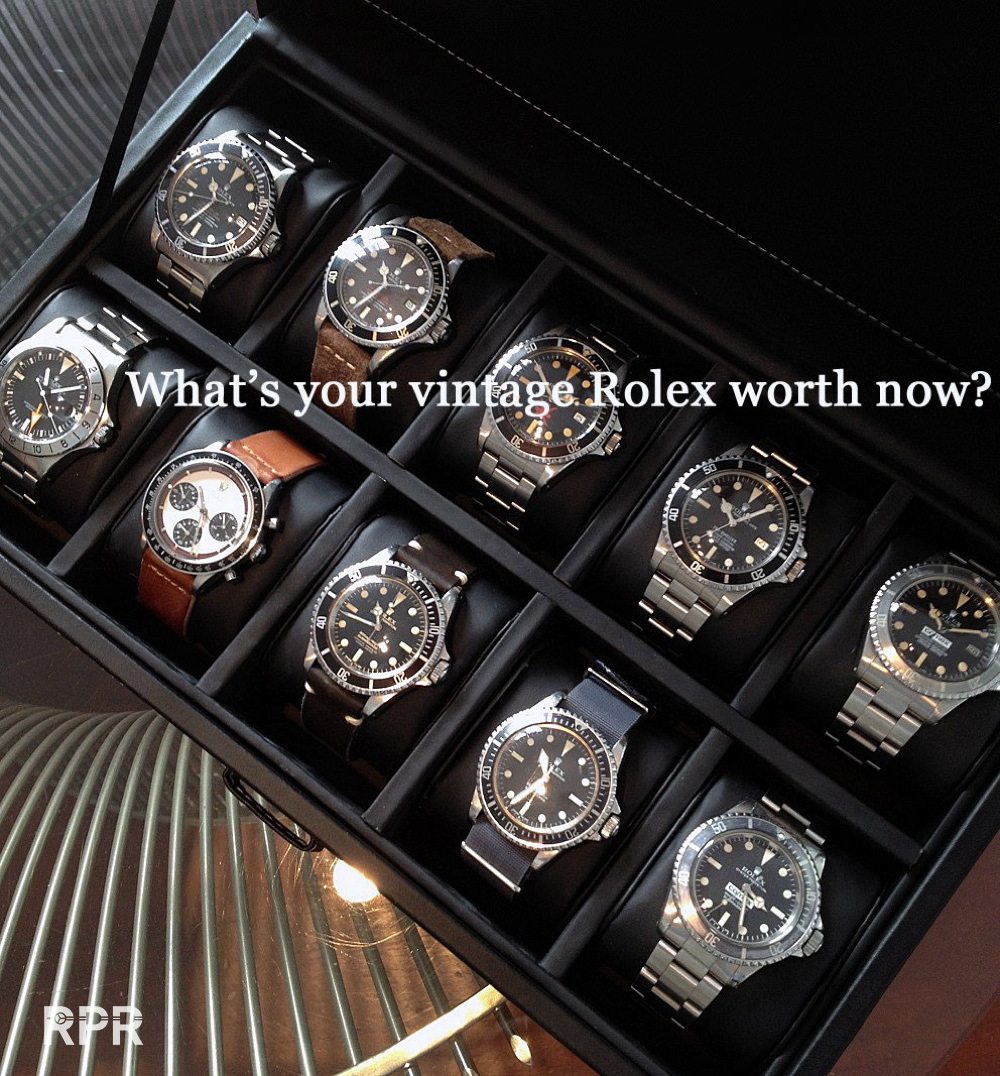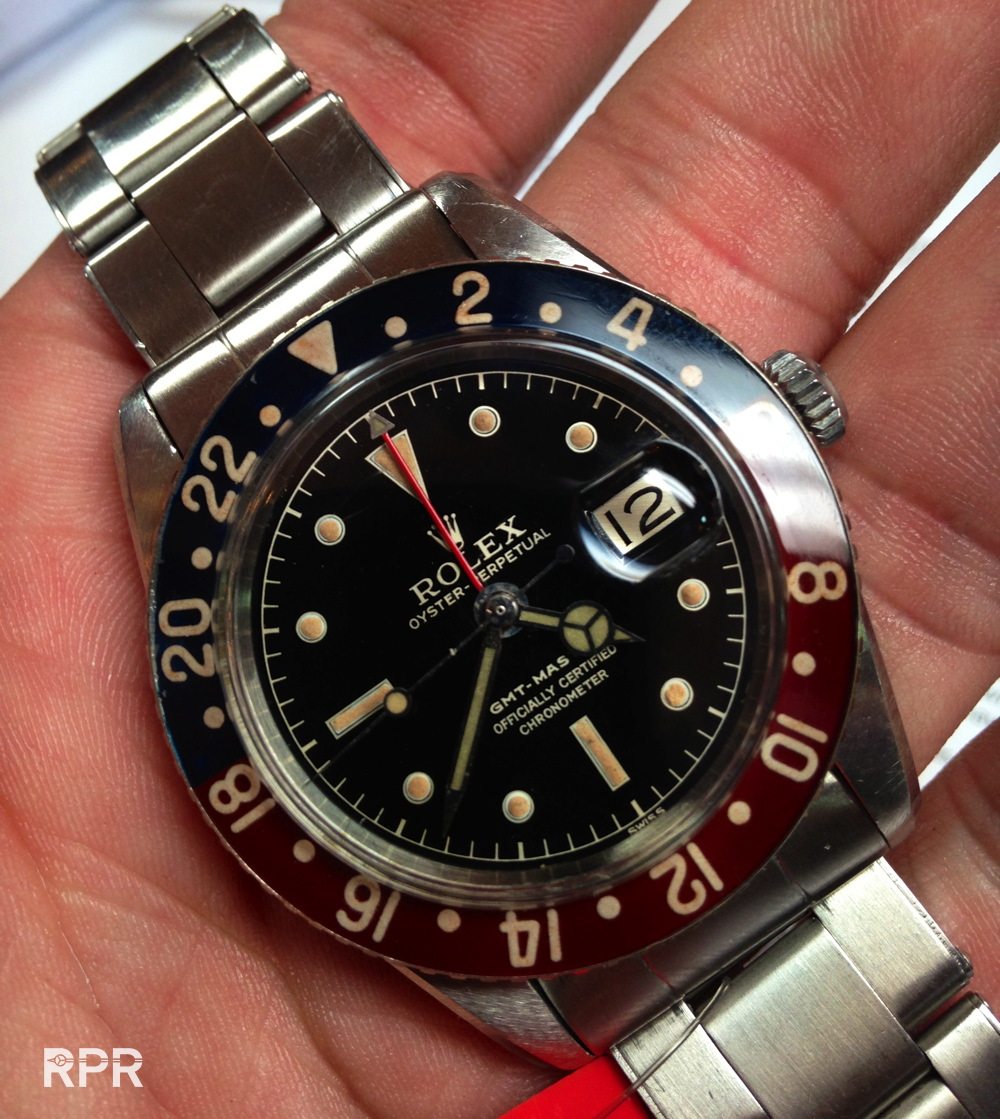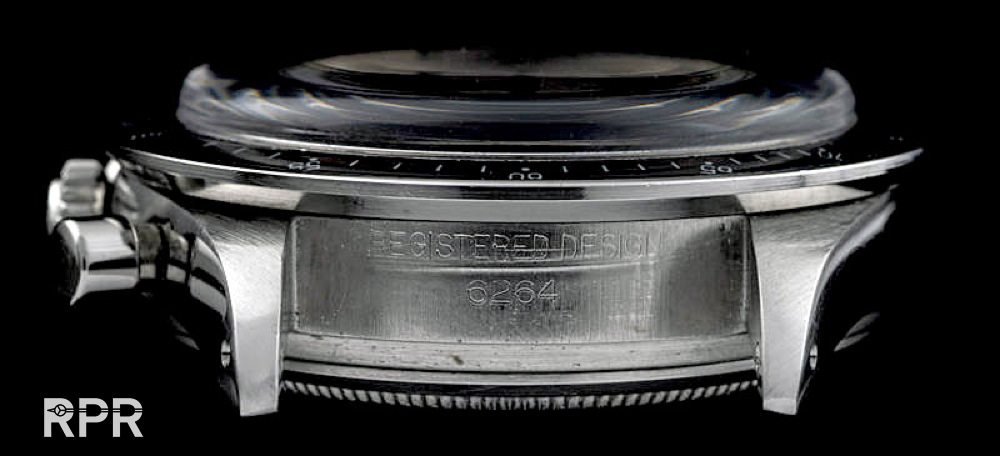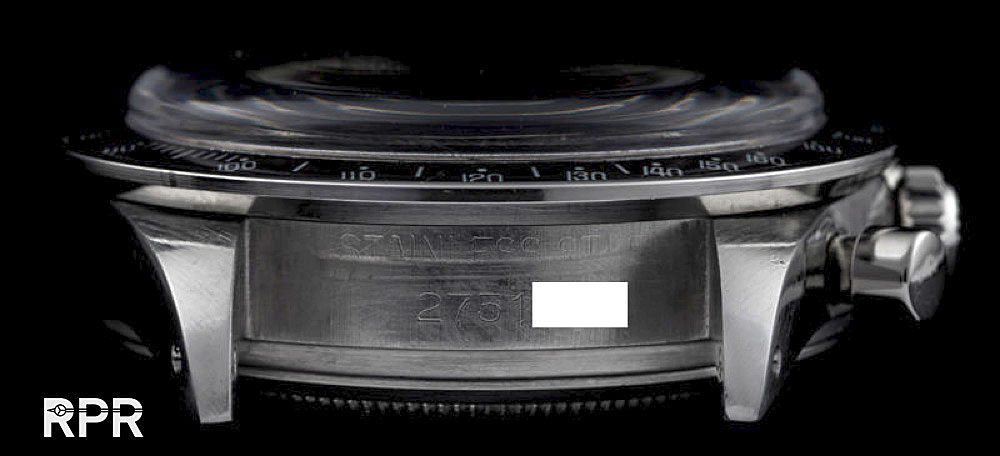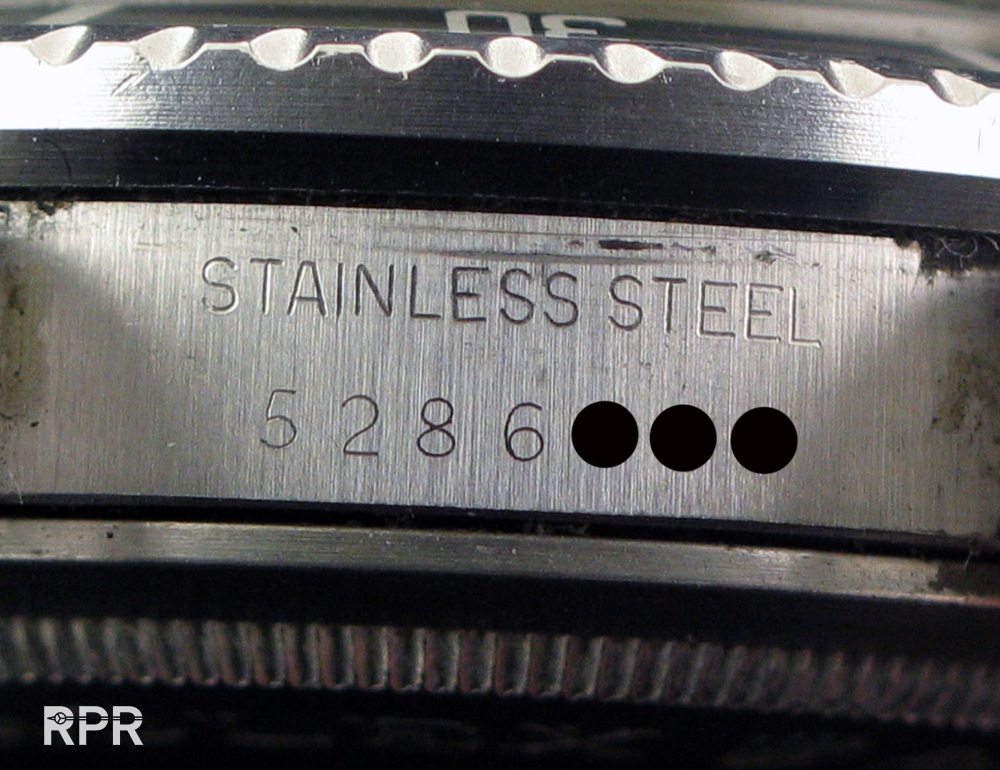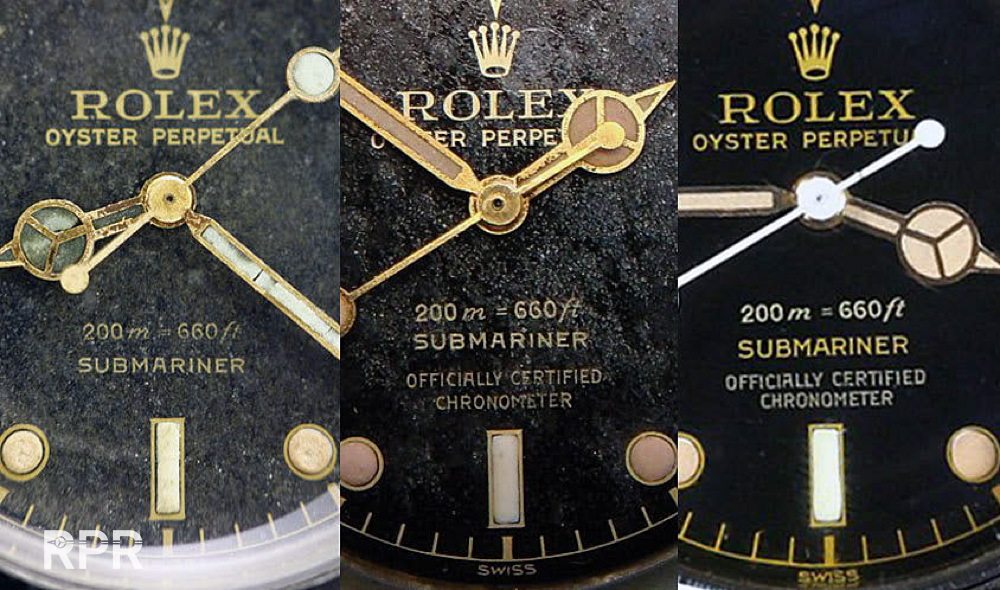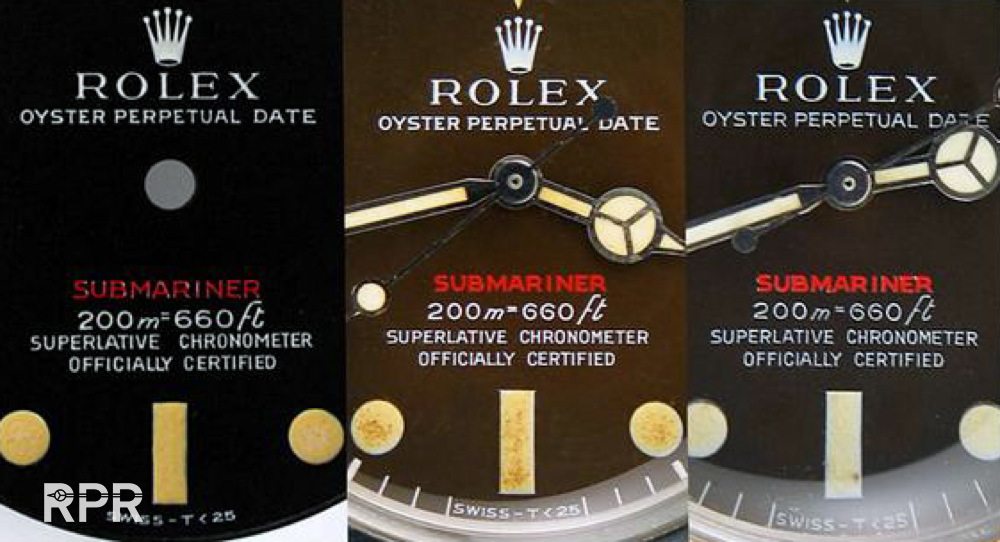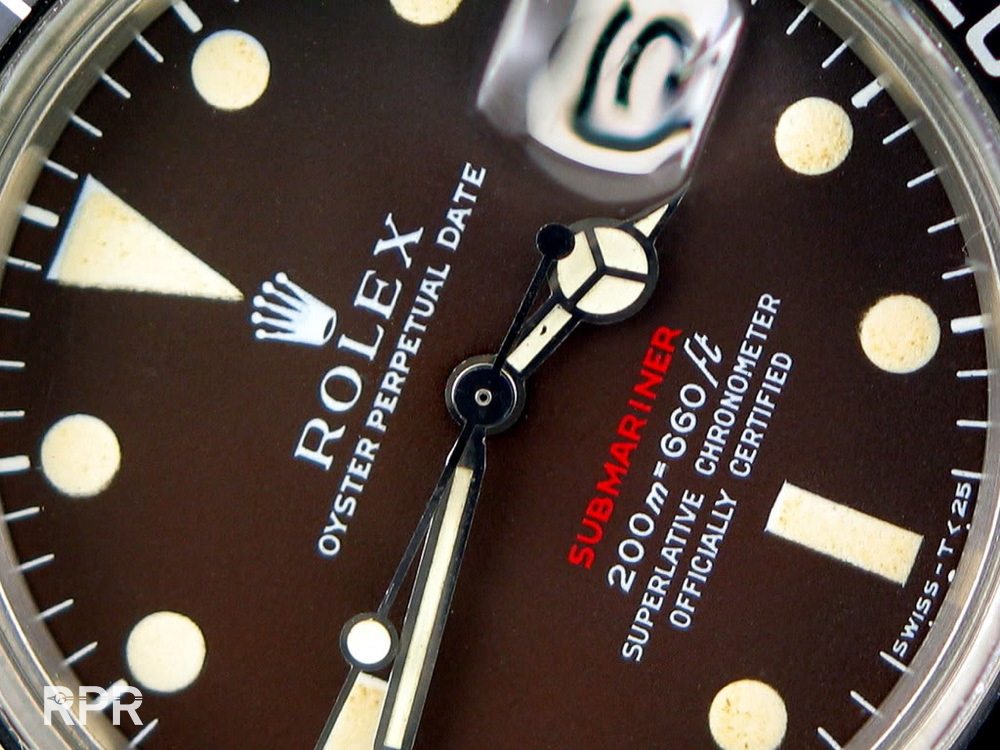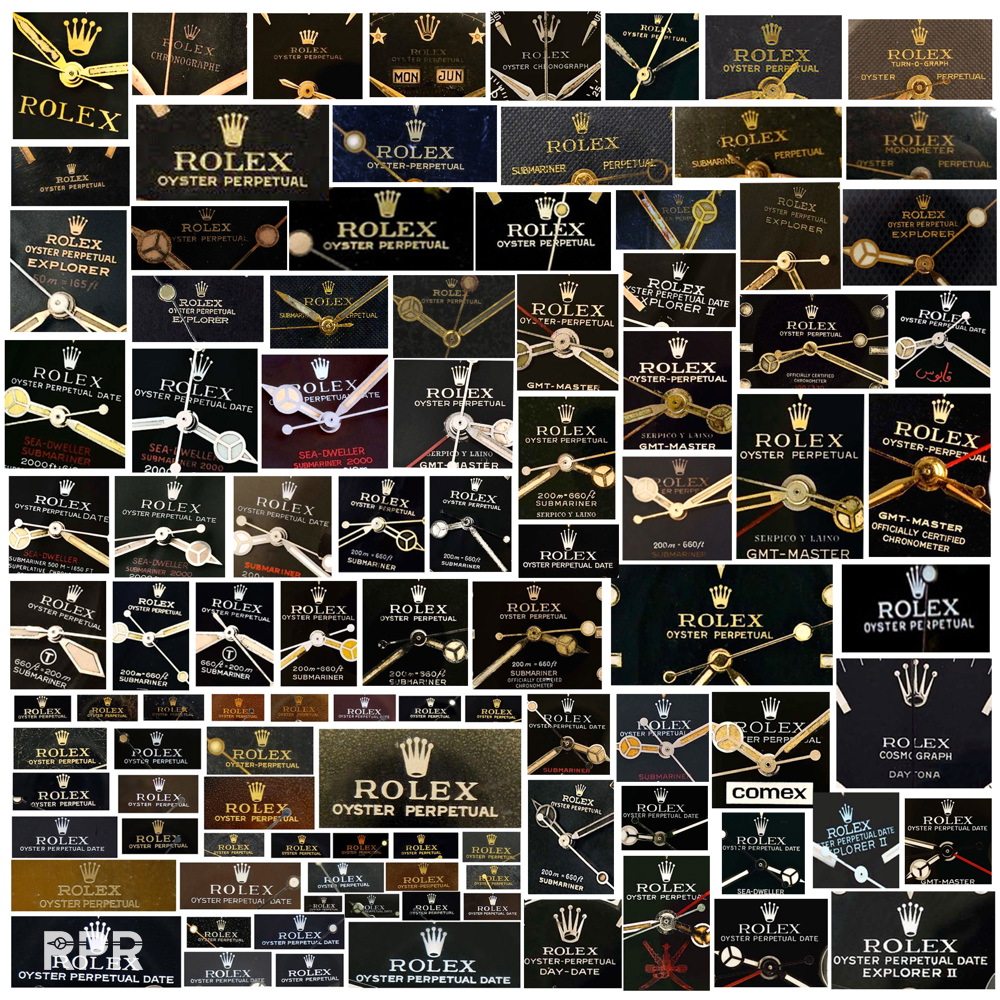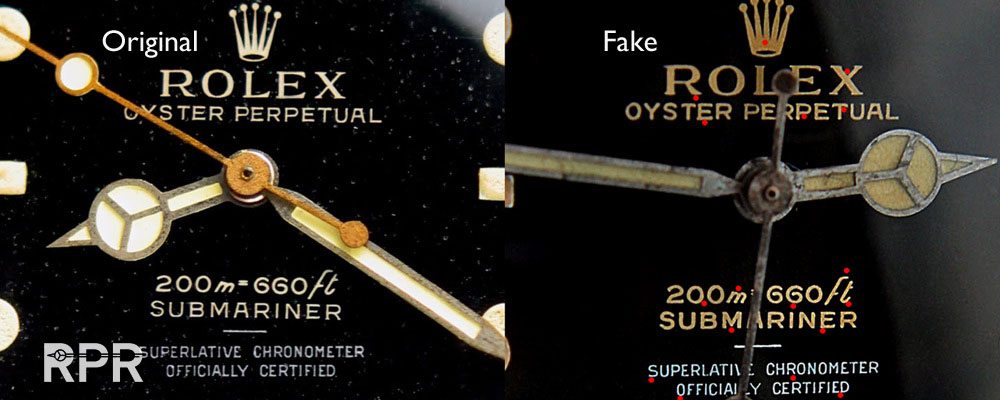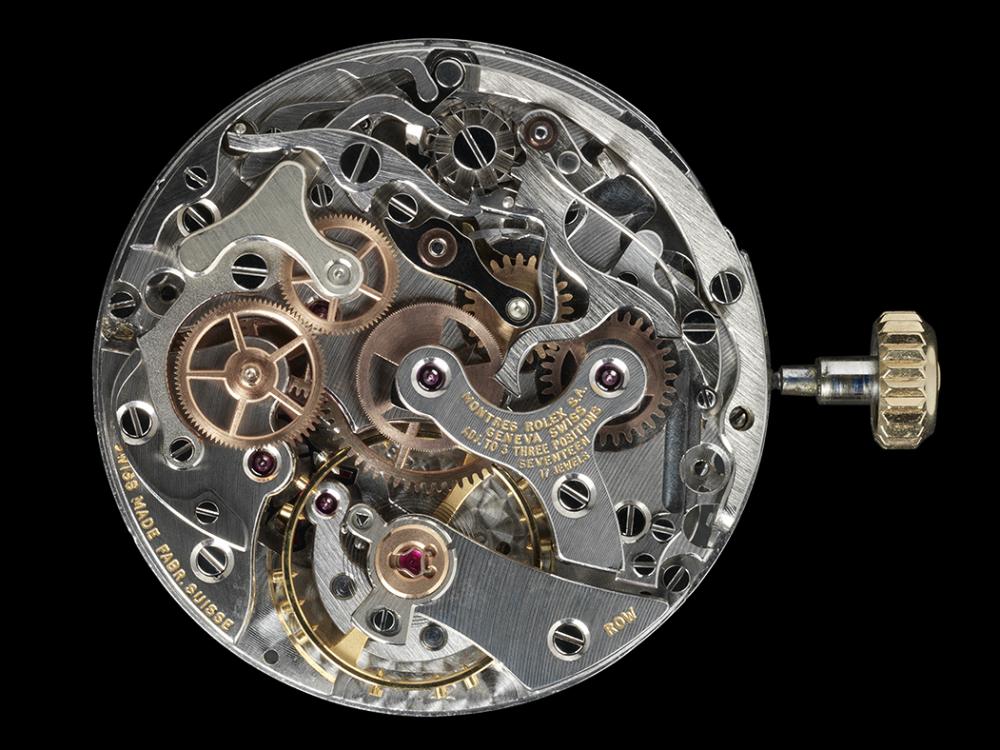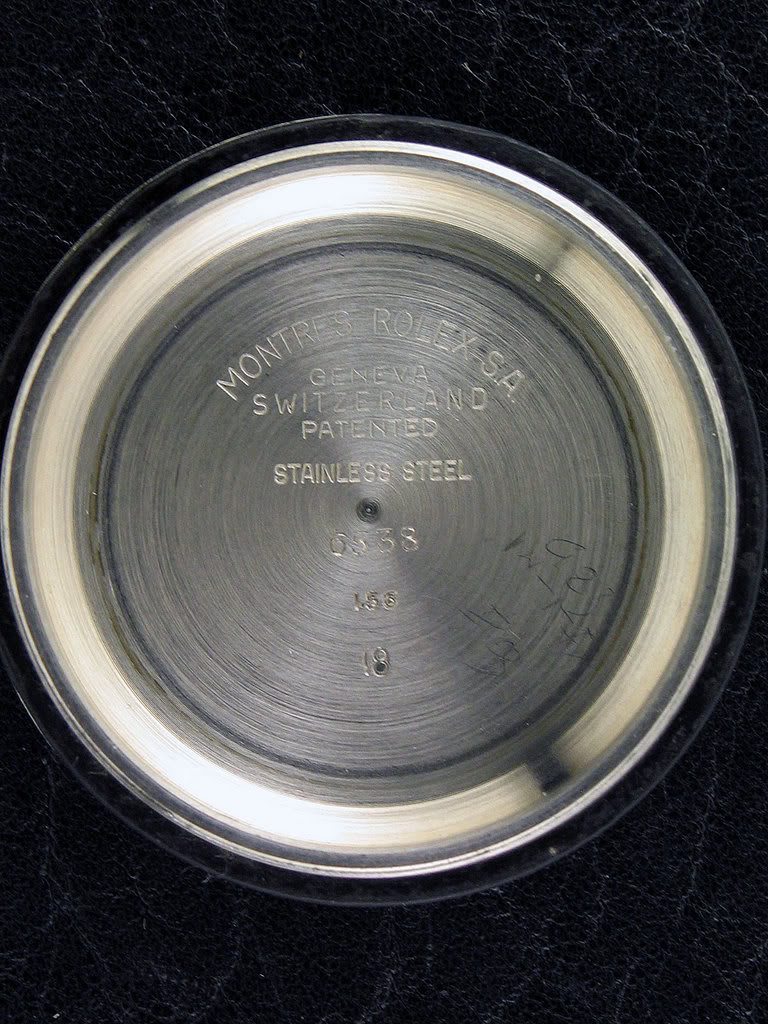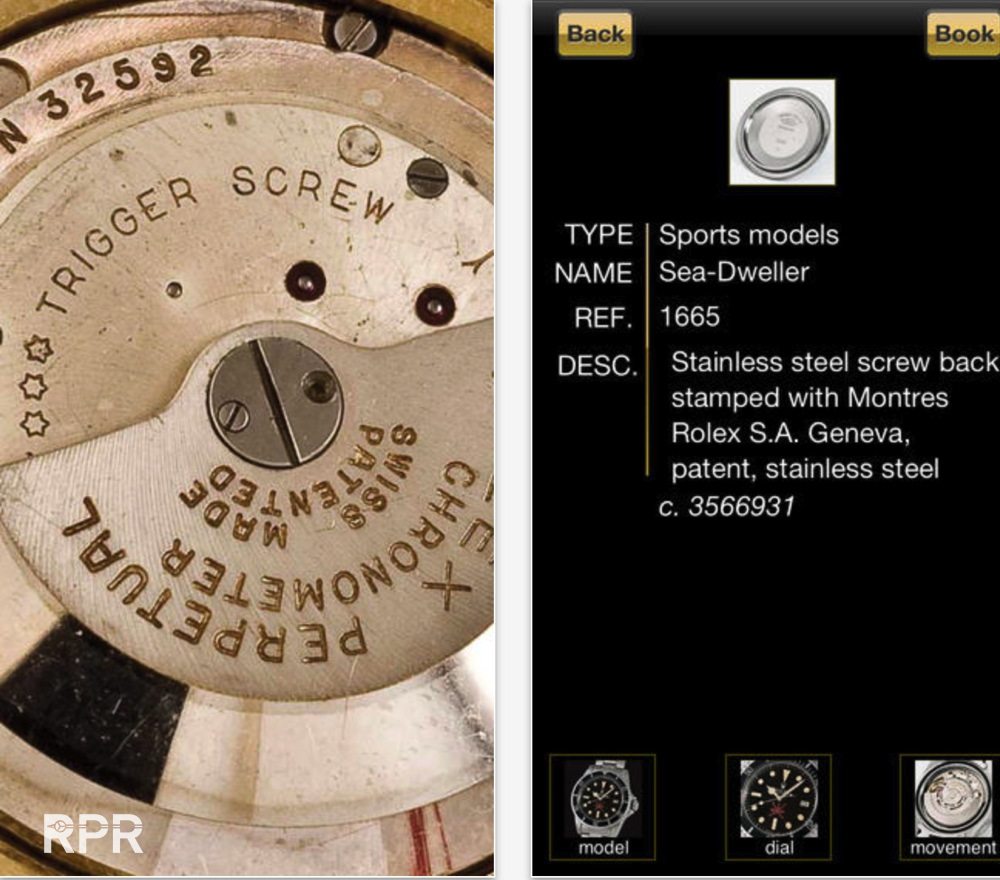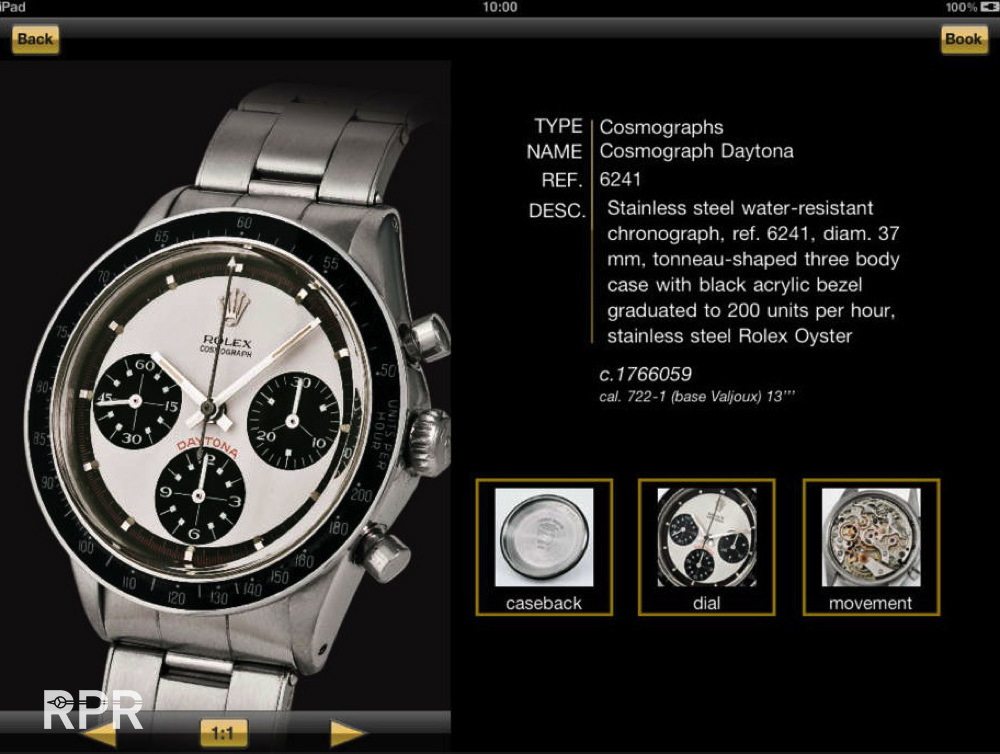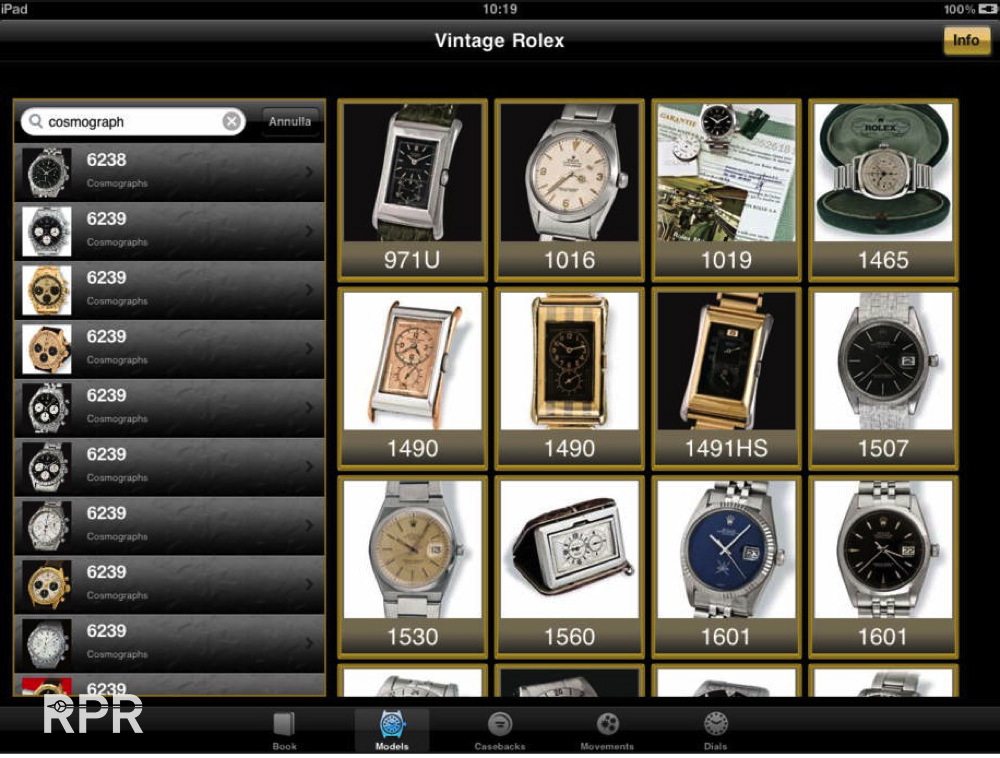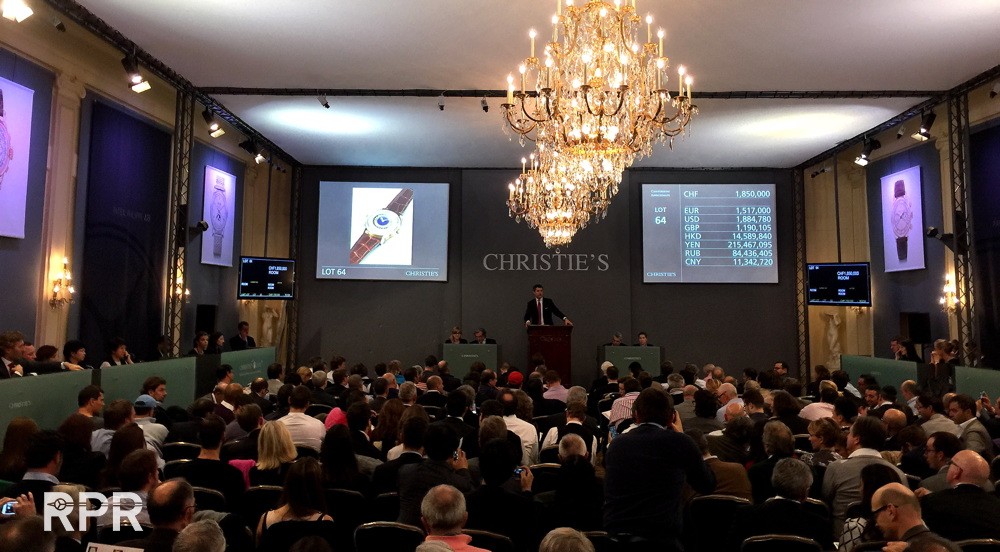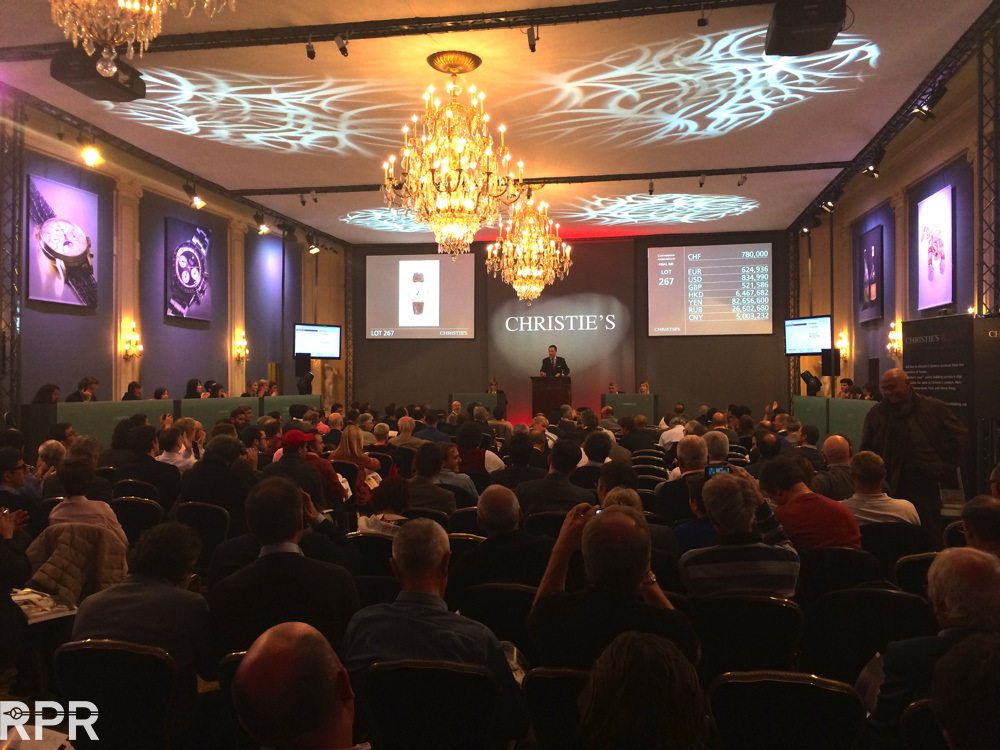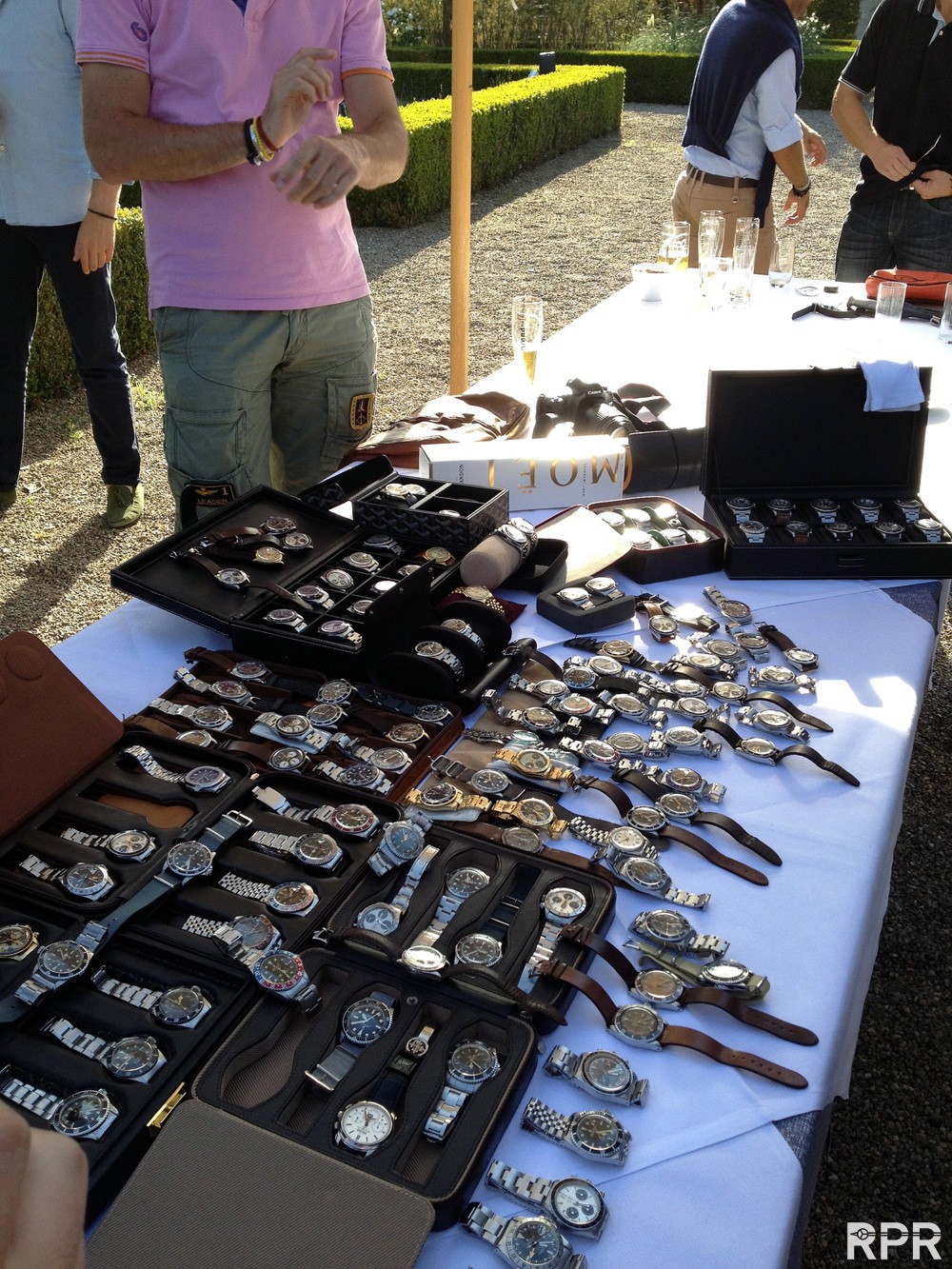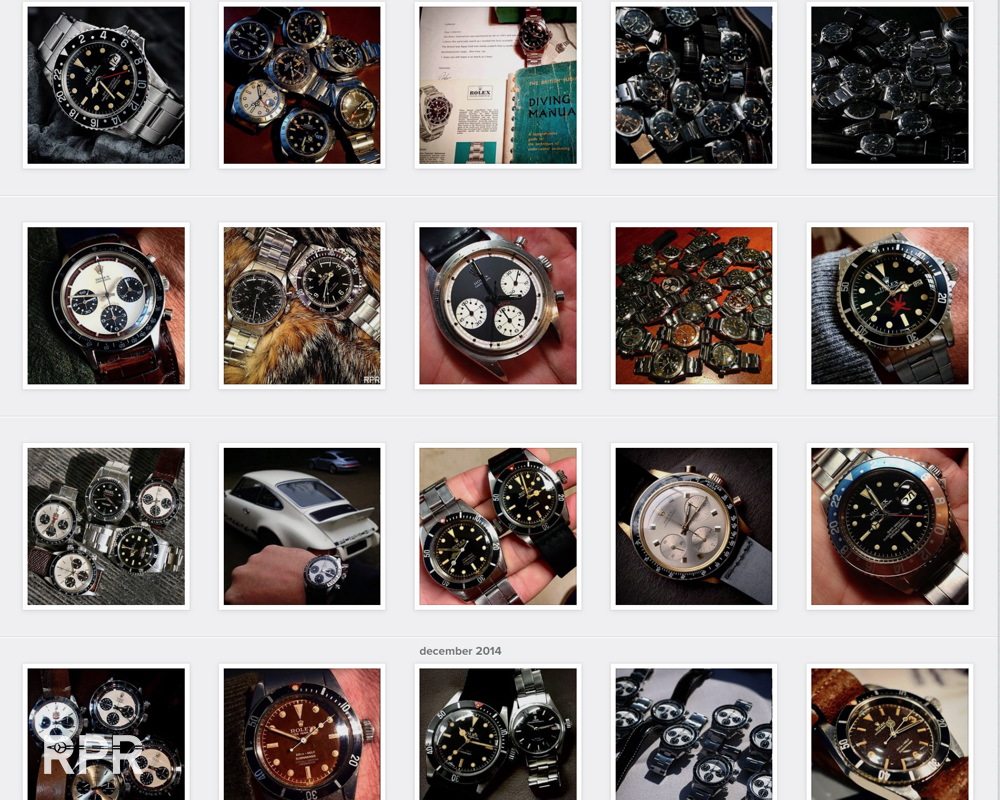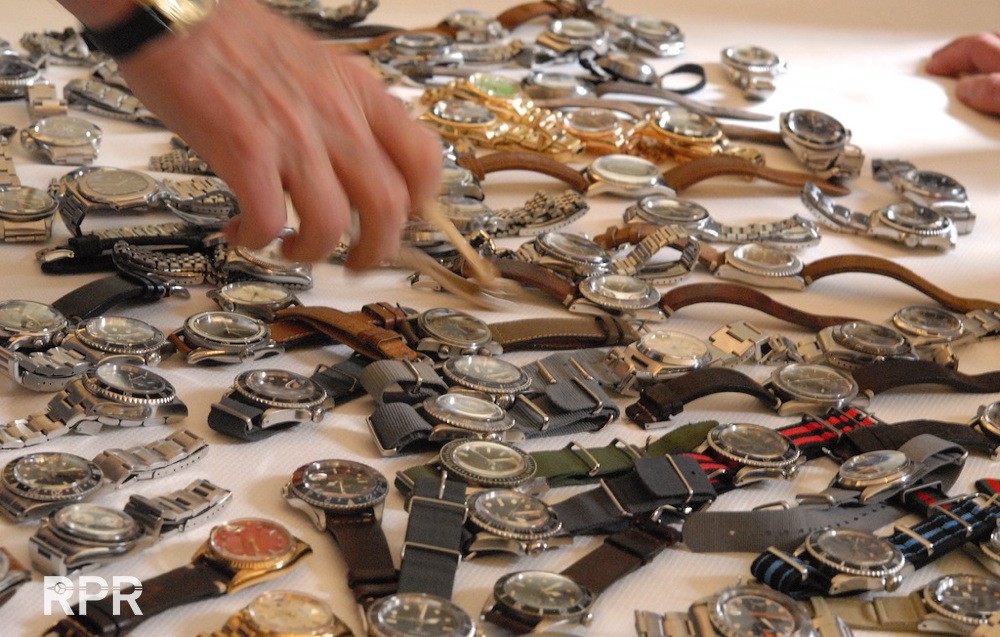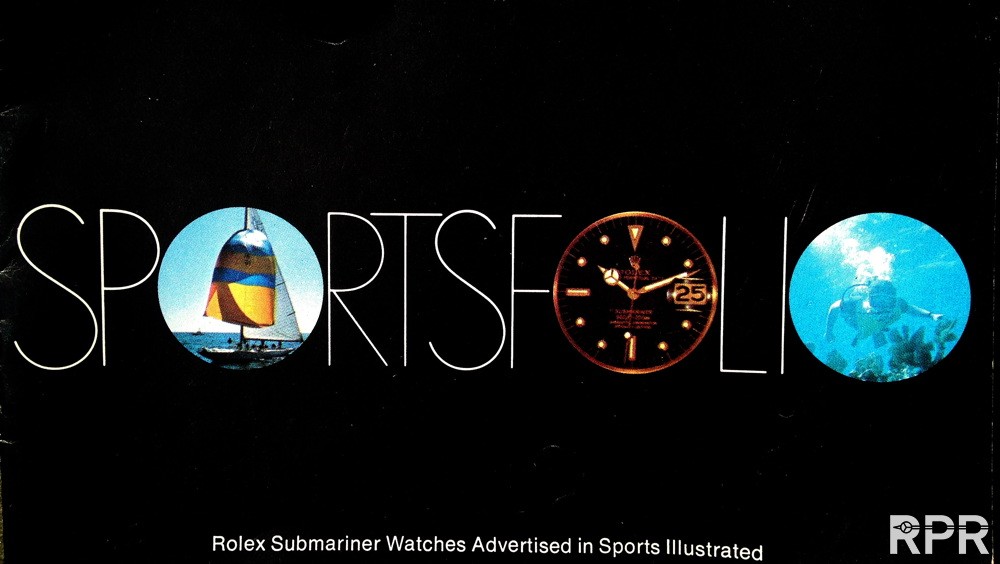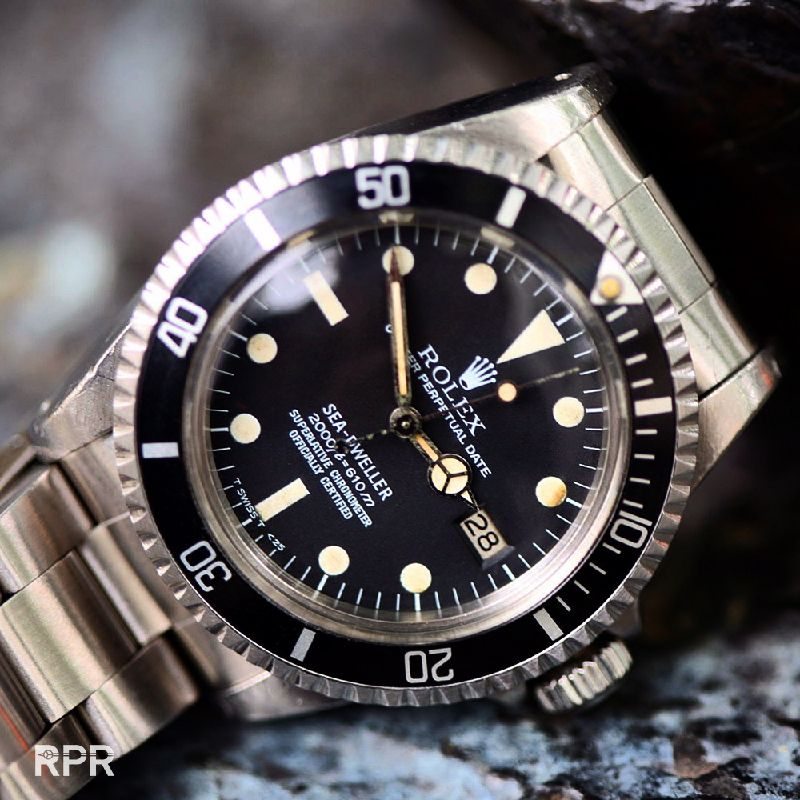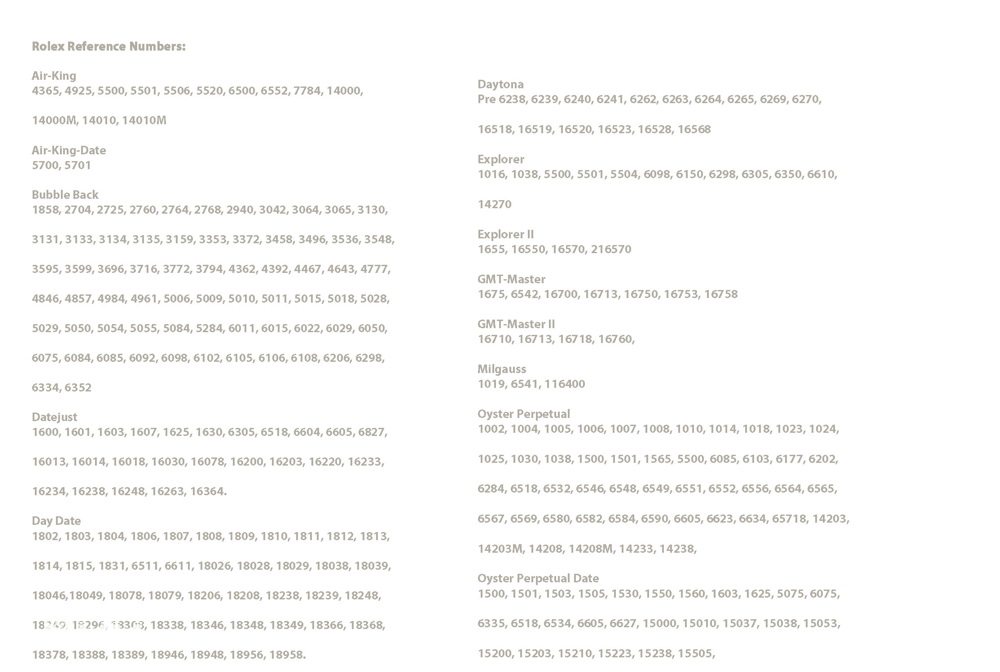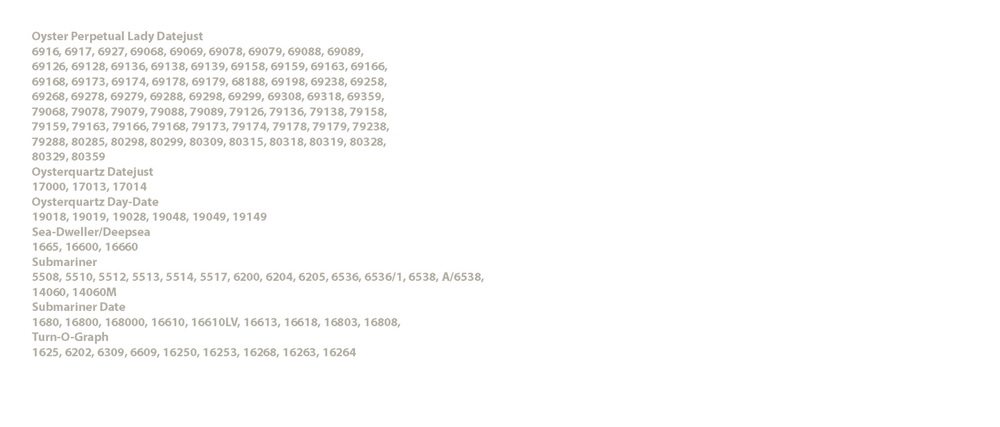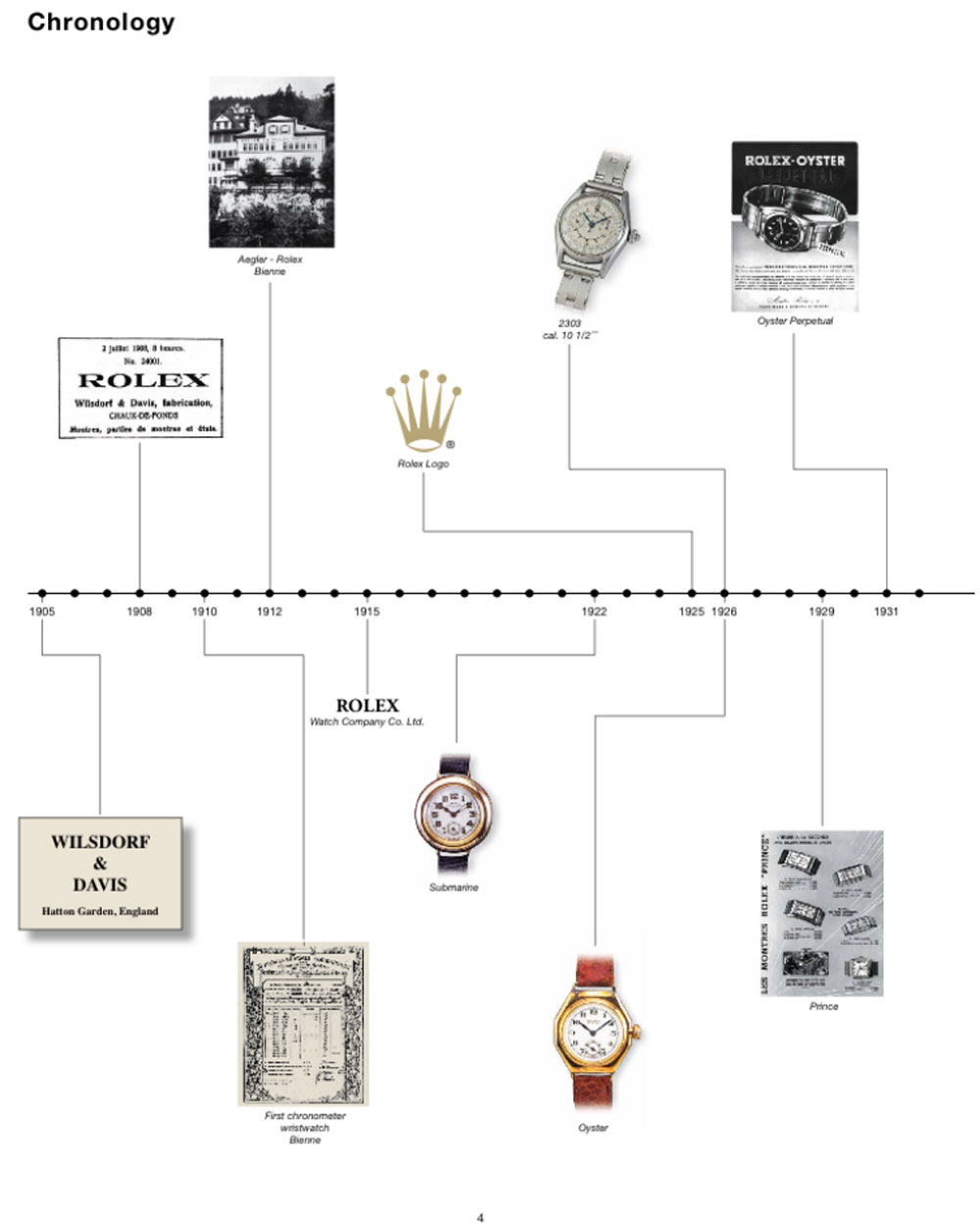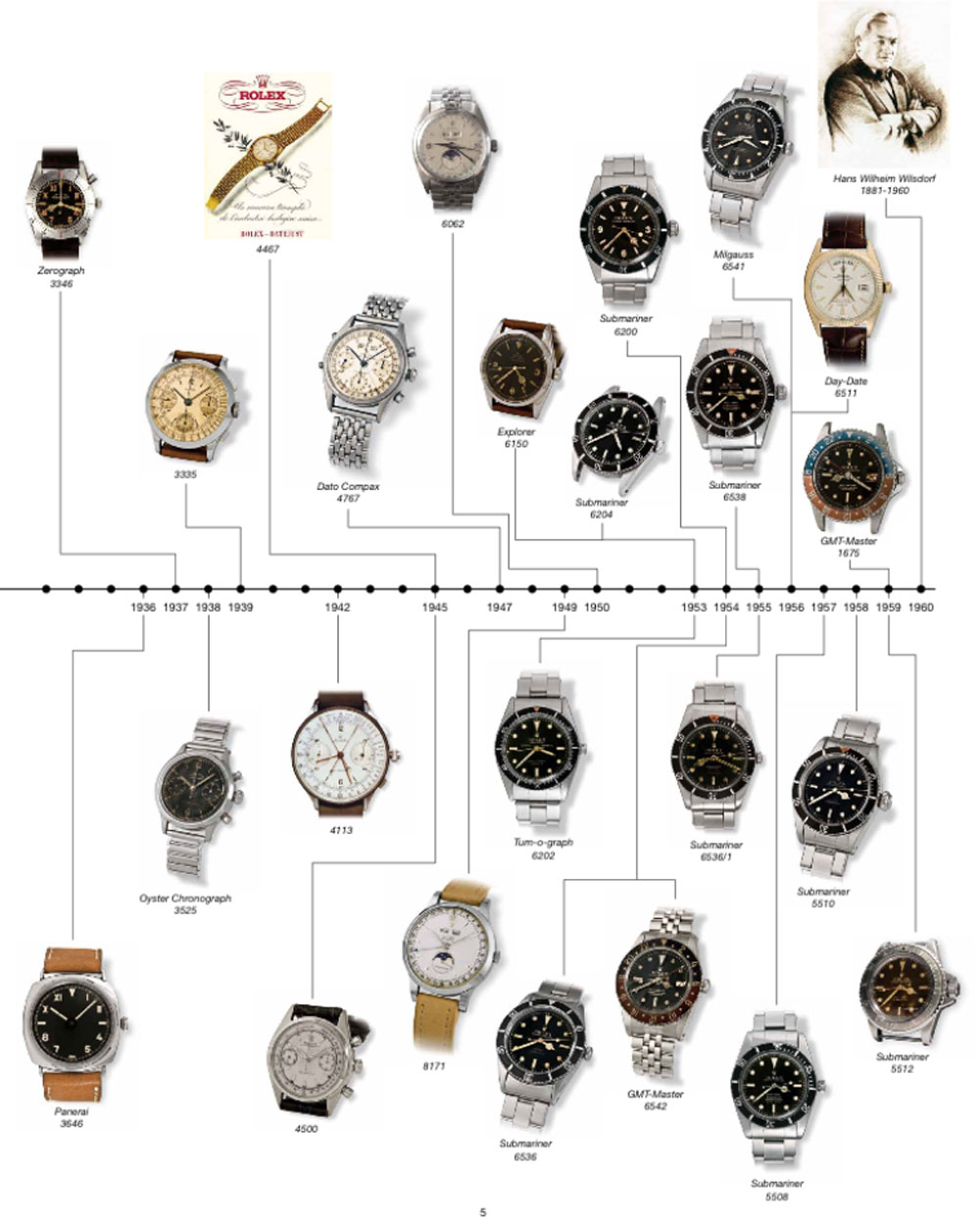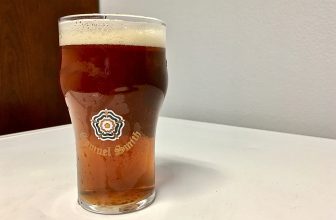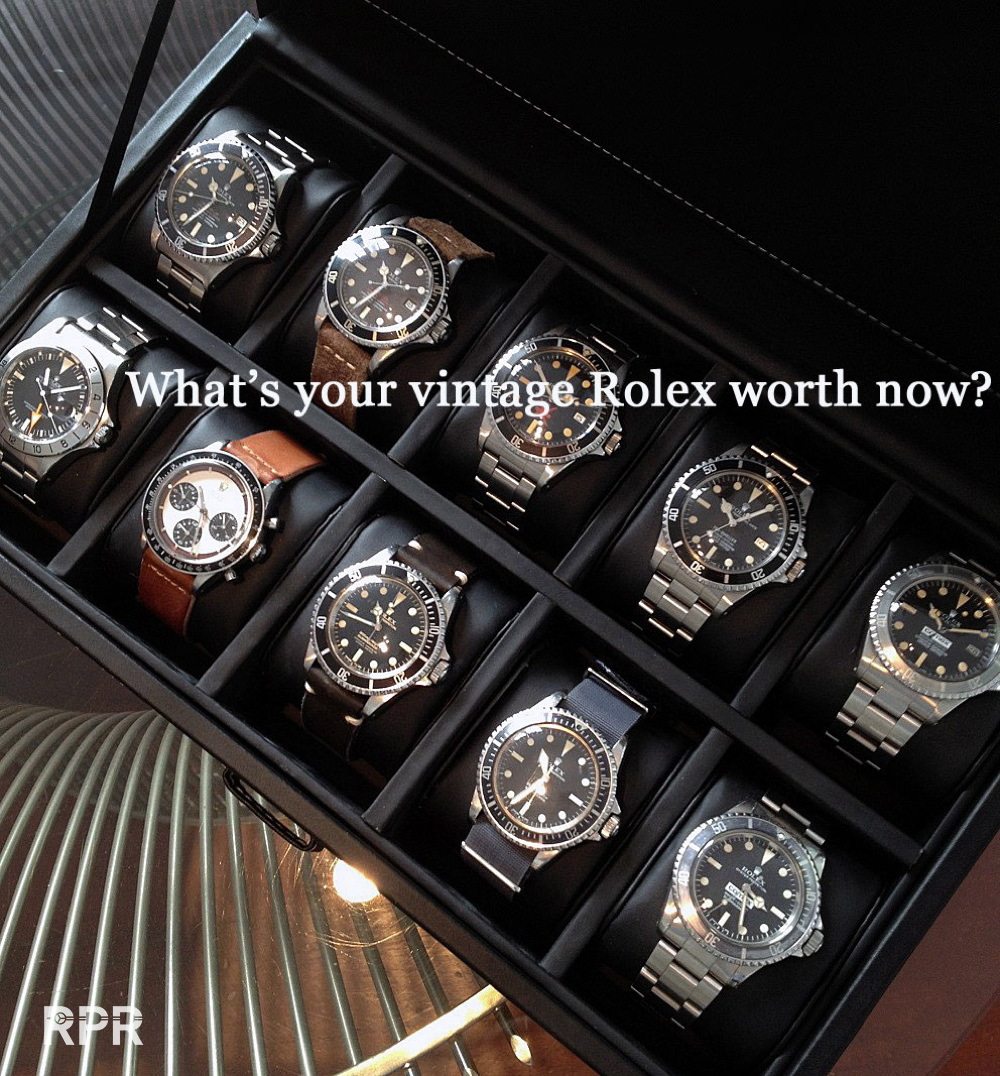
Learn to know the value of your vintage Rolex. What is the price of your vintage Rolex in current market?
One of the most asked question I get every day is, what is my vintage Rolex worth or what is the price of my watch? As this issue has been discussed in depth on every specialist Rolex forum since many years, I’m not trying with this report to undermine the conclusions but merely want to add more information about how to determine the value of your vintage Rolex. How do I find out what my Rolex is worth? And then, what’s the best way to sell it?
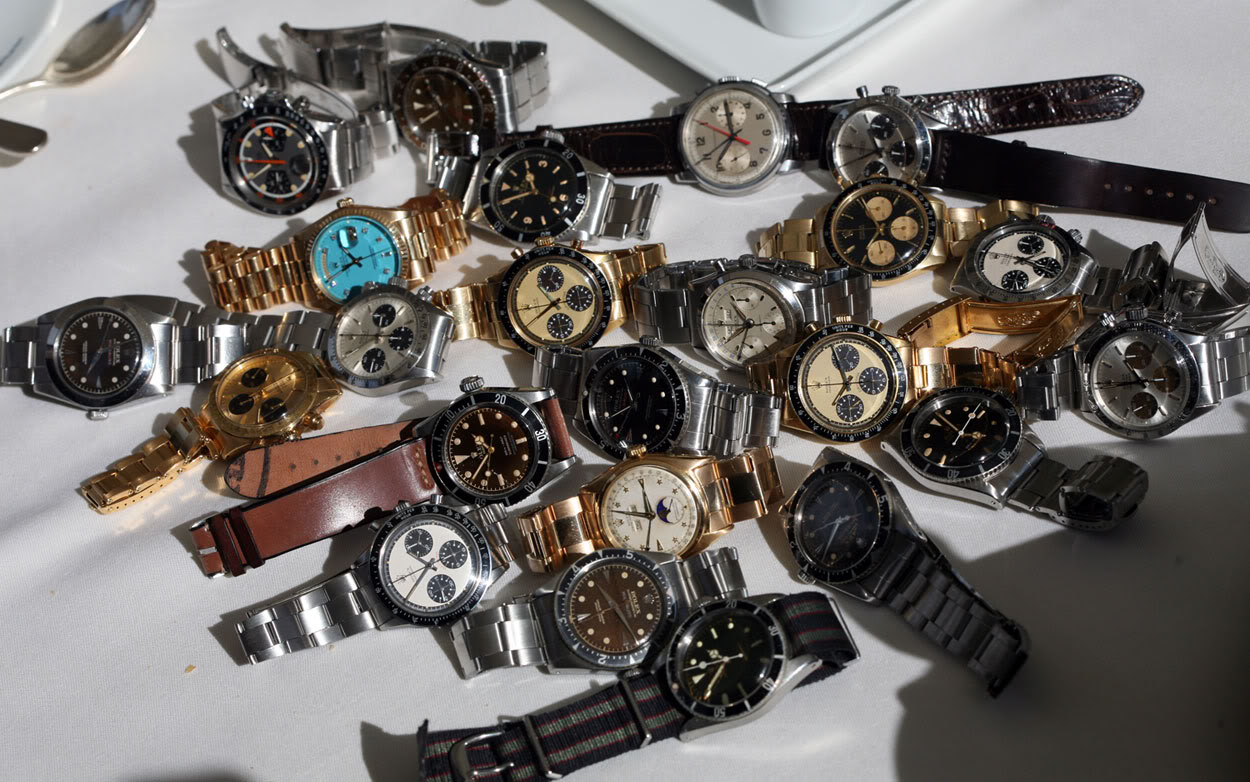
Once your vintage Rolex has swapped parts, even with later original Rolex parts, the collect-ability goes down rapidly. Off course if it’s for the bezel insert only, you still can find period correct ones offered in the market to swap it back to original. But it is much harder and more expensive to find a correct dial that has been changed by worldwide Rolex dealers during one of the many services to bring back the waterproofness and durability of your Rolex, .

What I often see when people send me pictures of their Rolex is that the hands, crown and crystal have been changed. The changed hands are immediately visible by the non matching luminous of dial and hands. Below clearly visible the non matching handset with the luminous on the dial, the tone is of the hands are almost greenish whilst the dial is more yellowish. Besides that, the 24 hour hand is not mounted correctly. This should immediately ring your alarm bells telling you something unoriginal has happened, somebody has restored it incorrectly…
During services Rolex cleaned the movement, pressure tested the case and changed the gaskets and often changed also the hands so these become luminous again. After 1964 radium ones where forbidden and later tritium ones lost their luminance in 15 years. Therefore, before you start comparing your Rolex with others, it’s very useful that you check closely if all the parts are original. Within collecting Rolex there are hardly any steady rules. There are always exceptions one will find out when you dive deeper into the world of vintage Rolex. But let’s start with the most common basics by checking out the main information you need to gather when you start analyzing your Rolex.
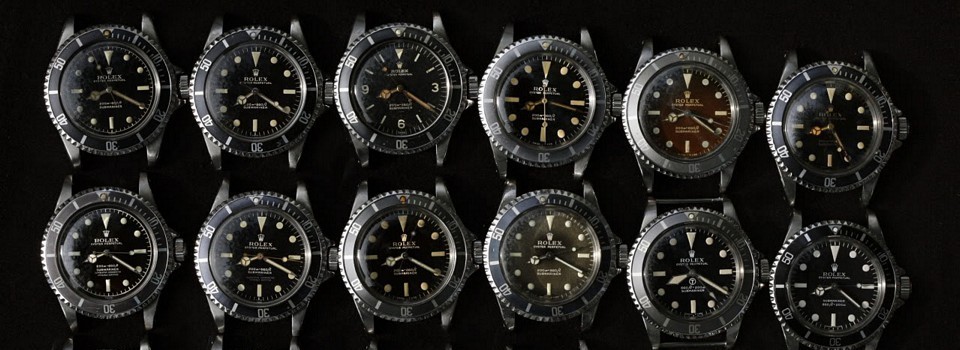
- The reference number or Rolex model.
The reference number is mostly engraved between the lugs at 12 o’clock. During the years the number changed from 3 to 4 digit in the 30’s, from 4 to 5 digit in mid 80’s and recently from 5 to 6 digits for the newest models. With some early 30-40’s models you see that the reference is added on the case back. If you know the reference you know what model it is. As most Rolex models have holes in the case where the push pin is holding the bracelet tight to the case, by using a small pin, it’s easy to remove the bracelet and write down the serial and reference number of your Rolex. At the end of this report I will summarize the most used Rolex reference numbers for you.
– Above, the serial number is clearly visible once you remove the bracelet, you see this Daytona is a reference 6264
– Below, the serial number from a Sea Dweller reference 1665 up close
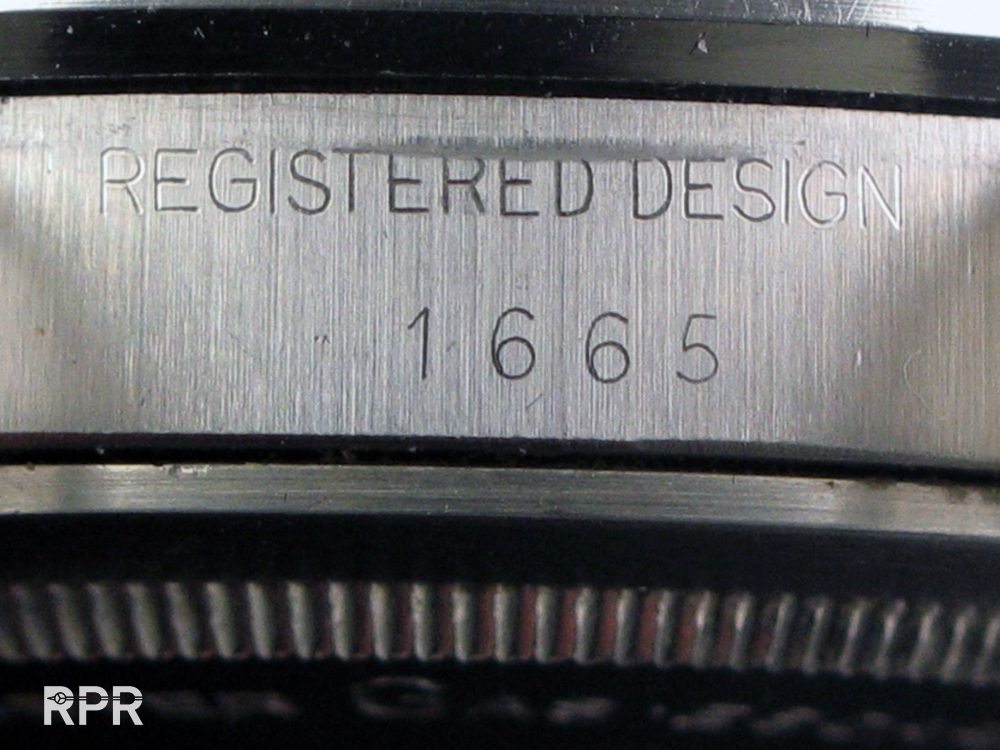
- The serial number or production number.
As Rolex was a clever company and due to the fact that many Rolex models were produced over the years, the system they used from the beginning by labeling the serial number to a production date was really great. You locate the serial number between the lugs on the opposite of the reference number, at 6 o’clock. From the beginning of the production till 1 million serial examples produced up till 1954, Rolex started over again at 1 to come to 1 million again in 1964. Then in 1986 they reached almost ten million (9.999.999 examples) and started using a character to define the year of production. With some early 30-40’s models you see the serial number was added on the case back. At the end of this report I will summarize a list of the Rolex serial numbers and their dates of production for you.
– Above the serial number is also visible now ( last 3 digits are covered ) making this a 2.731.xxx, which is 1971
– Below the serial number up close, 5.286.xxx making it from 1977.
Now you know which model you have and from what year it is, this is already important information to determine the approximate value your Rolex. Next you should find out if your Rolex is still all original or if it has non original parts / later service parts. It takes years of practice to learn to compare vintage Rolex in detail but despite this I will try to help you in the right direction.
- Early SWISS markings at 6 o’clock telling us the luminous that was used is radium.
- The from 1964 introduced tritium stamp at 6 o’clock: “SWISS – T
- Up close the “SWISS – T
So many Rolex dials of so many different models but then, once you start studying them, you’ll find out more differences for the same type of dial are being made. Below Black Oyster Daytona dial all look the same but in detail there are small differences. This could be the font used, serif or non serif. The placing on the dial is not always consistent but divers per model. The cliche used for every batch / model is often been changed after it got old and tired, depending on the popularity of the model we see many changes in detail. Find below a comparison between ref. 6240 Daytona and later ref. 6263/6265, it’s very hard to see but indeed the right text has become a very small serif text…..
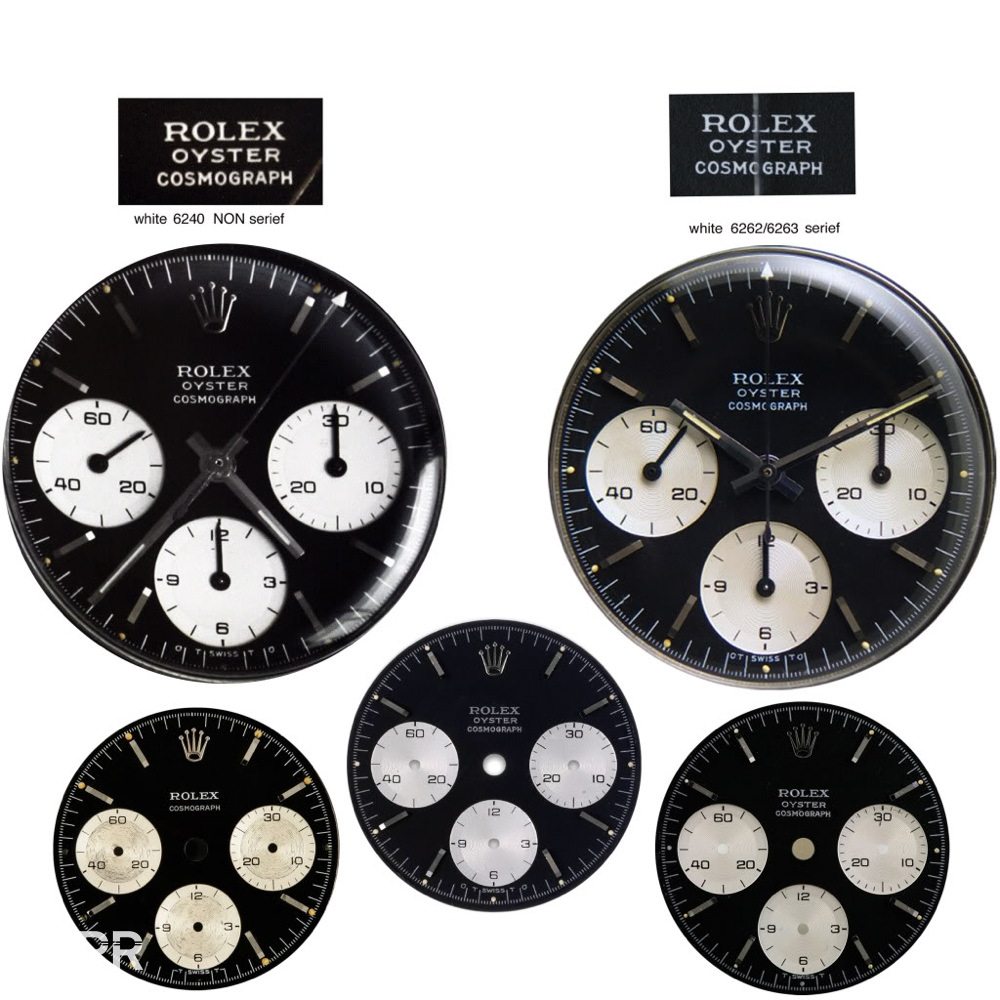
Here are some general advises for checking out the originality of your vintage Rolex:
- First look at the Rolex coronet in detail. Every Rolex reference has it’s own coronet. Learn them to compare!
- Secondly you look very very closely at the rest of the Rolex print on the dial, do this carefully. To make it even more difficult and make you understand what to watch for, here’s a link to an RPR article about Fake vintage Rolex dials I warn collectors for!
- Then using simple techniques as a Geiger meter to see if there’s any radiation left on a Pre 1963 Rolex is very handy
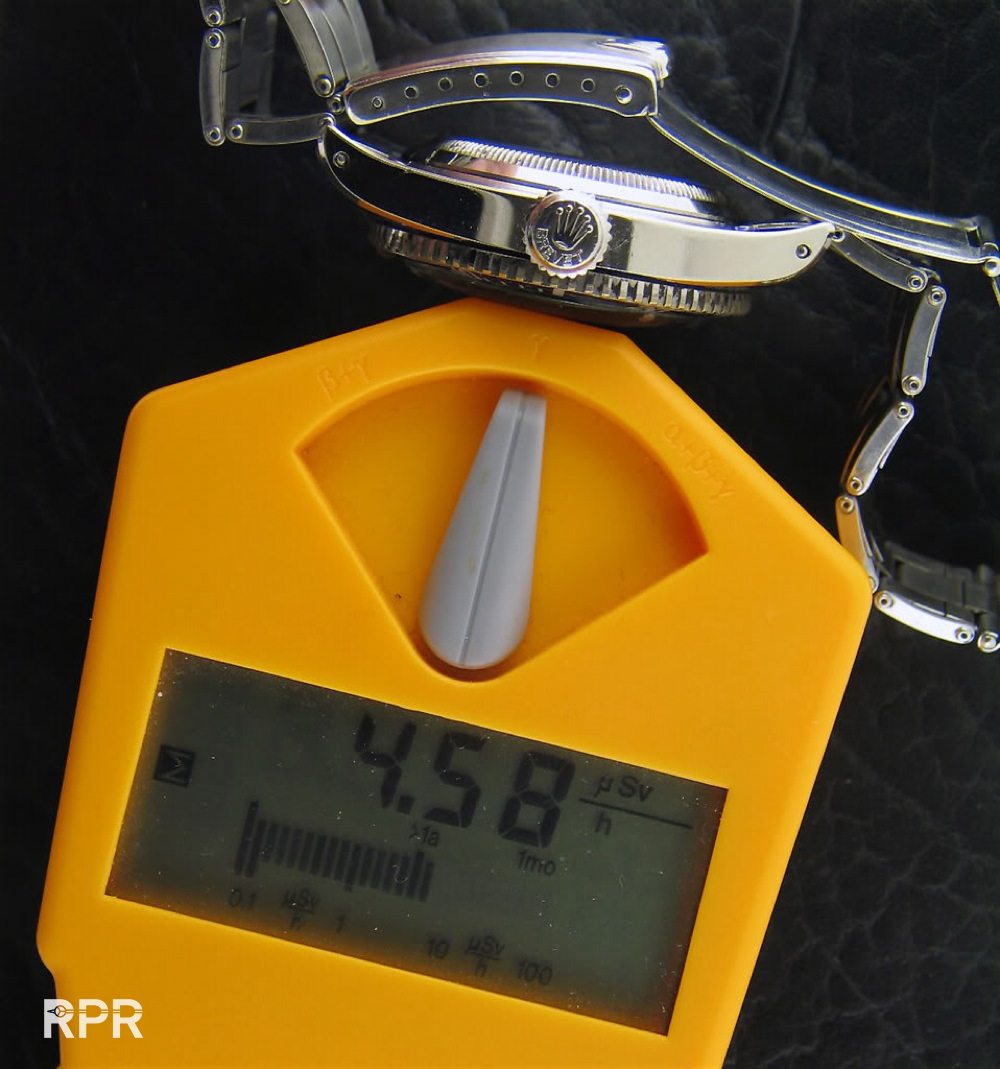
- If possible to open, the case back inside is giving you some extra info about the reference and in pre 1972 also the date stamp.
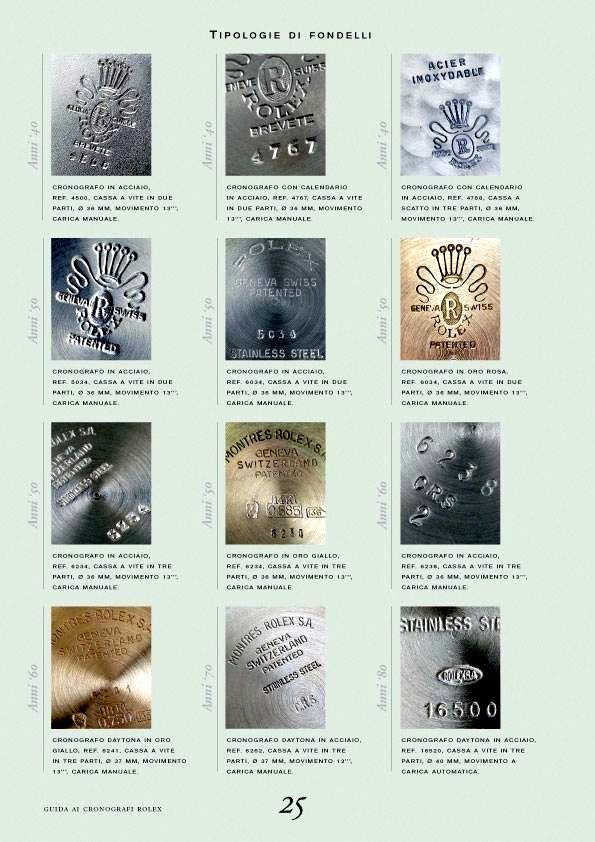
In some cases, you also see the watch maker marks, below in the middle to the right are the inscriptions made by the watchmaker who serviced it, if these start with GE you know Geneva has officially serviced it but in almost all cases are the marks not giving you any more info maybe except a date as every watchmakers uses his own system. Nevertheless ones you see these service marks in the inside of the case back, the chance is considerably that besides a movement clean, the hands, crystal and crown have been swapped as this was almost done automatically with every serviced watch. Rolex wants to deliver their watches back being waterproof.
So below the reference number is 6538 for Rolex Submariner Big Crown produced between 1956-1959, then below you see I.56, which means it left production at first quarter 1956 and all the way down you see a stamp that has shortly been used around 1956, the 18 which stands for the (high) quality of steel that has been used.
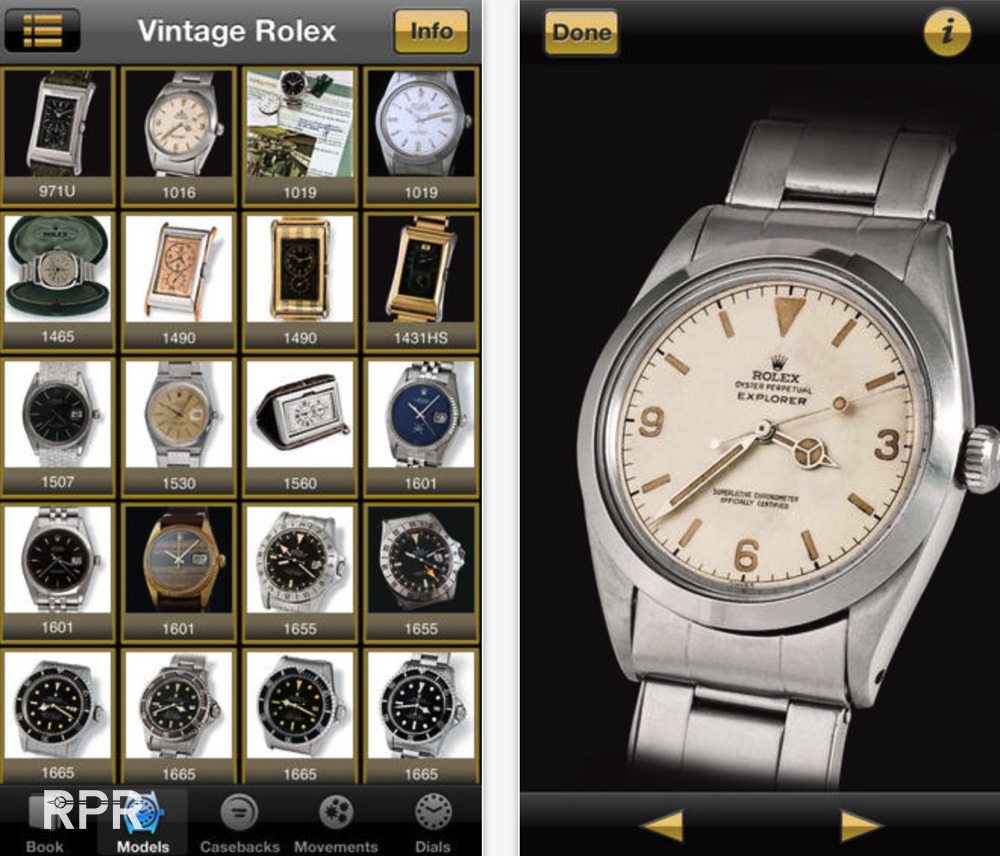
- You have a great overview of all models by reference, you see all case backs, movements and dials. There’s no better source!!!
- Very important information about the serial number and movement numbers are published for you to compare!
- Last but not least, check my –> “Vintage Rolex Buyers Guide” again with the new information you obtained and double check all details mentioned in my report to come to a final conclusion about the originality and condition of your vintage Rolex….
Now you have an idea of which Rolex model you have, from what period it’s made and if it’s still in original condition (or at least parts of it ) you might want to check out the value by searching the sales results of the mayor auction houses which specialize in offering vintage Rolex. Every specialized auction house has it’s own database of achieved results. Find below a direct link to each of these databases where you can enter the info of your vintage Rolex to find out what a average sales price is in the market since last years.
Now we are talking about auction houses, let me just explain the basic rules of the vendor. Basically you as a buyer need to be sure that you want to bid on something that has your interest. Therefore the auction houses arrange viewing days prior the auction. During these viewing days you can examine the lots of your interest up close, ask a watchmaker to open the case back so you can see the movement, make remarks and do your own due diligence about what you want to pay for it.
The auction house provides you with information printed in their catalogue, additional info like copies from the papers, extract from the manufacture or service records. Once it’s auction day you can bid in all sorts of manners, for example actually bidding in the room, or by phone, by internet or by written bid. Once you’re the winner of a auctioned lot, you will have to pay a premium on top of the hammer price. That is the fee for the auction house which is in most cases about 25 % fee for hammer prices realized up to $ 100.000,=. Then 20 % fee for hammer prices realized from $ 100.000,= to 2 million and 12 % for hammer prices above 2 million. The seller who gave his Rolex to lets say Christie’s will get the hammer price minus 5-8 % costs.
The pro’s for selling by an auction house is logically that the hammer price gets up bid to a much higher number then the estimate was. Actually this doesn’t happen to often anymore because the experts of the auction house know exactly what a piece can bring, besides that they don’t want to ruin the expectations. An auction house earns money when they sell something successfully. If it fails to sell during the auction, then maybe it will be sold afterwards in private sale.
The con’s are the long time you have to wait before it get auctioned, the uncertainty if it sells and the total costs to use their service. Besides that it’s not at all certain that your vintage Rolex will be sold during auction. Sometimes by obvious reasons because the quality couldn’t meet the estimated price but also due to the fact that dealers are working together and not bidding at all so they can try to get it cheaper after the auction in private sale. Another more modern reason why a certain sale can work out negatively is the fact that we see on social media rumors been spread which could effects the sales price.
The other most used option is you offer it for sale at known or trusted dealers, those that have a reputation built up after dealing for many years in the market, have excellent feed back and references.
Once you gained enough information, you will know if the dealer is offering you a correct price. You could also discuss selling it by commission, so that the dealer get a fixed percentage of the sale and the buyer is wiring you the money directly. Pro’s of selling through a dealer is the fact that a deal is done quickly. You don’t need to wait as long as with the auction sale because they need to come up with a catalogue and in most cases travel around the world for previewing the sale to their clients.
Above Christie’s important watch auction in Geneva and below Phillips Auctioneers…
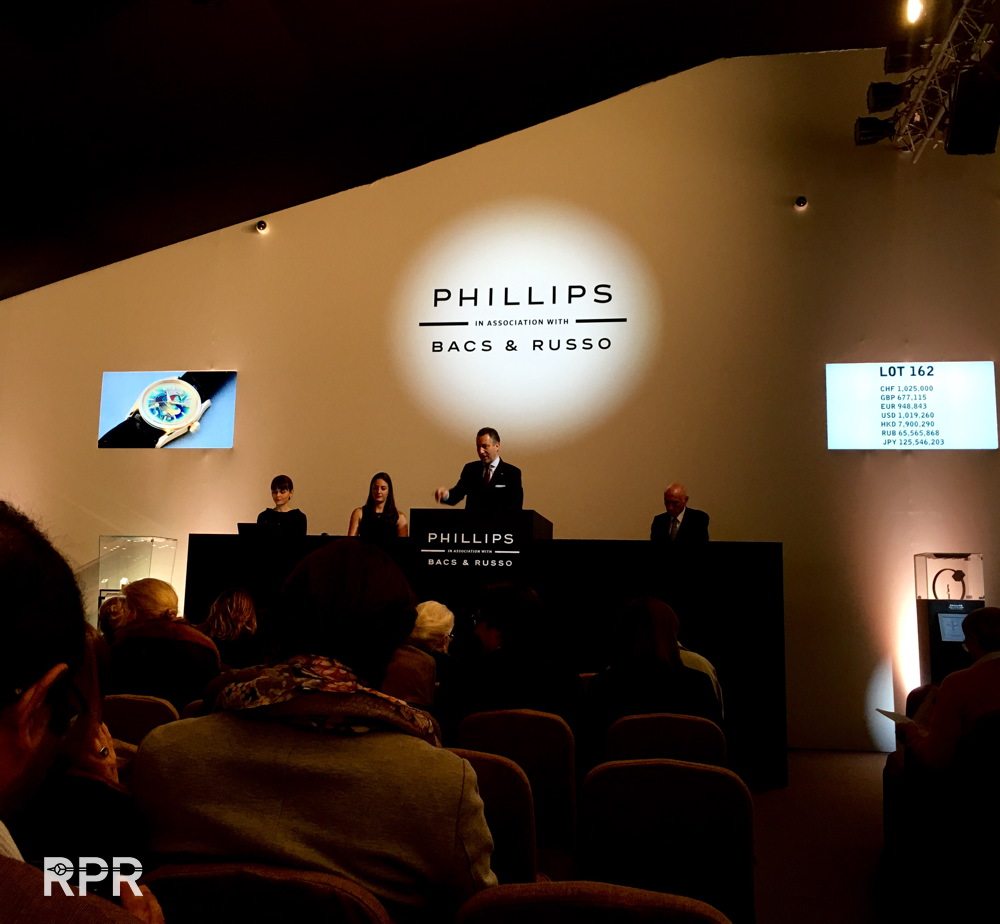
Back to “What is your vintage Rolex really worth now??”
In the last couple of years the value of rare vintage Rolex has gone up rapidly. In the past people liked to invest in properties, stocks etc, but now we see many people that can afford to spend their extra money in art – collectables. If we look at the art indexes like below you will see that alternative investments are scoring a very high return on investment, if off course you buy with knowledge and from a trusted source. We see alternative art and collectors funds come up rapidly as lots of rich people want to profit from the popularity collectors markets have like classic cars, wine, jewelry and watches…
What does this mean for the value of your vintage Rolex? For example 2-3 years ago a Rolex Daytona with Paul Newman Ref 6241 dial sold for around € 50.000, whilst a regular Daytona sold for € 20.000,= as these models have been fashionable for many years. The current value of these Daytona’s has gone up to € 100-150.000 for the Paul Newman version and € 30-35.000,= for the regular Daytona. ( Get one thing clear here, that the difference between these 2 prices is only the dial, a dial which costs like € 50,= when the producer Singer made it end 60’s). Immediately the most important difference catches the eye, we see that iconic rare design went up in price more then the regular collection. People nowadays want what is special, been boosted on populaire blogs or comes into the news because a theme auction is giving them more awareness. In other words, those models that have been significant important for the grow of a brand, the 911 from Porsche, the Submariner & Daytona from Rolex are being picked up.
Back again to my initial question: „What is your vintage Rolex really worth now??”
Besides the time factor a lot of more awareness and media has been published about collecting vintage watches and their up going value. Once a vintage Rolex was sold for more then 1 million and covered the Financial Times makes the possibility of finding another one almost impossible, although the same watch didn’t sell in the open market for €250.000,= some months before. In other words, the moment of selling is very important. I hear many serious collectors complain that there hardly is anything around what they can add to their collection nowadays. Indeed, the frequency that important new finds get for sale in the open market is much less then 5 years ago. Nowadays these ‘grail’ examples get sold immediately to the right person who is missing it the most in his collection. If this is through a dealer or through the private sale of the auction house, everybody knows everybody and eventually it will end up with that particular collector who pays the most.
- A rare Albino Daytona ( recently sold for 1.3 million SFR ) on the left and a tropical RCO on the right, both from 1 collector!
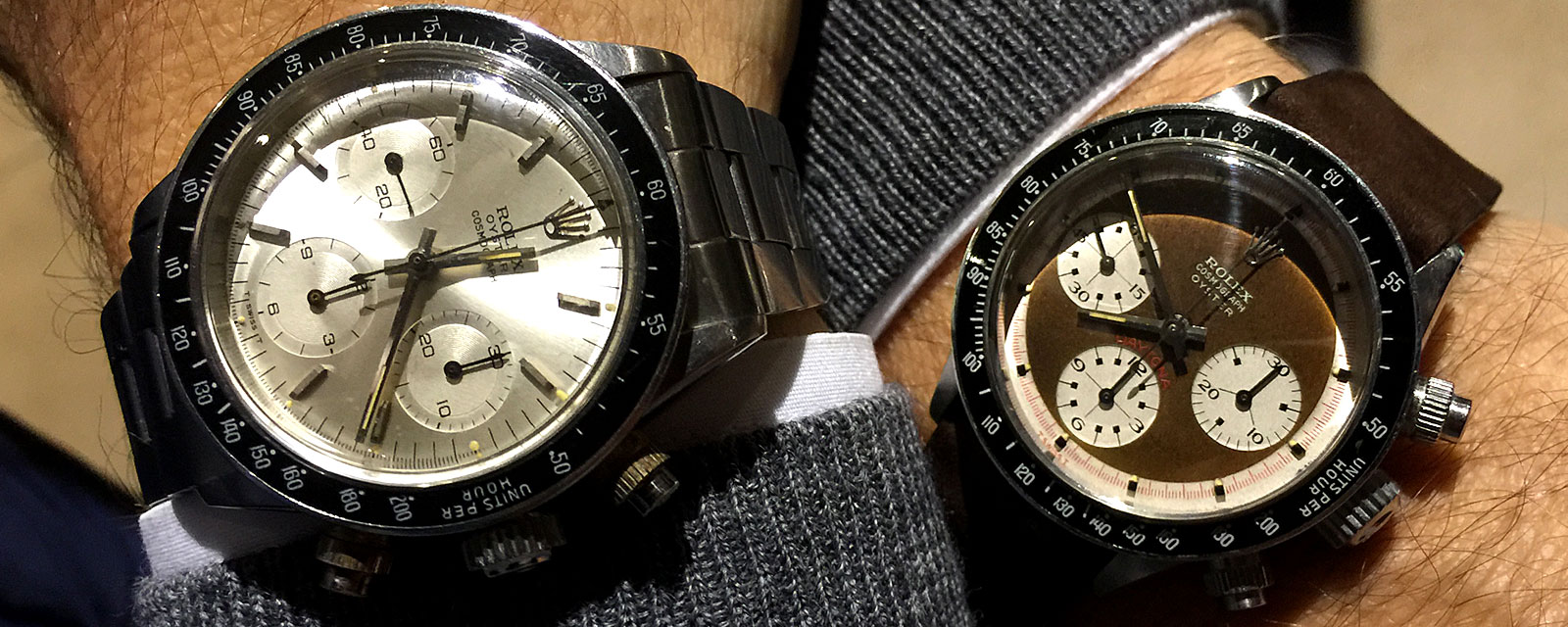
Now we pick the models we love the most like glossy gilt Submariner or Daytona but in the near future a quartz Ref 5100 will be as collectable as well. The generation of watch collector evaluates as well bringing in new taste. In classic car collecting for instance, the future collectables coming in demand are those pictured on posters that were hanging above the bed of those boys being able to pay for their dream car now. The watch trends and their trend for collectability is certainly close connected with the car world. If it’s vintage watches or classic cars, the main reason you should have to invest in it is the pleasure you get back from it. If you’re clever and do your homework properly, you will find out what the real value of your vintage Rolex is. If you buy a vintage Rolex because you really like it, you will never loose money on it as the time you’re enjoying it, is the best investment you could have made!
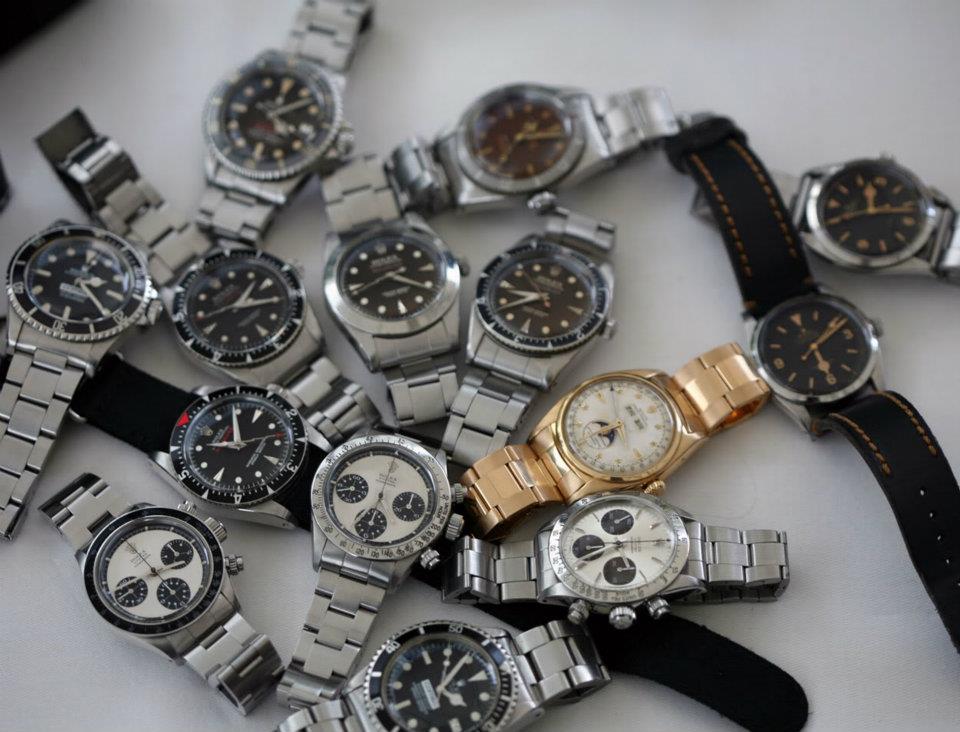
- I like to finish this report with a test to see if you understand what I tried to teach you in this post. Here’s a picture of a Rolex. Now before you scroll down to see my opinion, try to use the information I gave you in this report so you can come up yourself with the correct value of it. Good Luck!
.
.
.
.
.
.
.
.
OK, here we go. Once you would remove the pins on the side of the case using a pin, you will find the 7 digit Rolex serial number and the reference number. This will tell you it’s a Ref 1665 Sea Dweller. Then analyzing the dial, you will see that the graphics are different then the regular ones, specially the coronet and the lining of the SCOC text below on the dial. We collectors call this a “Rail Dial”. This dial has been produced by the Stern company (later owner of Patek Philippe) which also produced the Comex Seadweller dials for Rolex. This unusual dial we only see around 5.7 to 6.2 million serial making it when you study below serial number list from end 1978 – 1979. Next is to determine the condition, when you look closely to the finsih of the case and bracelet you’ll see the fine thin lines seems to be all original, smooth and steady, reflecting the light on a natural way. Specially the left corner lug seems to have some honest scratches on the chamfer of the bevel. The proportions are still looking nice and somehow sharp so the case looks to be in good condition. As I always try to focus on the “all over matching patina” we now focus if the different parts are having the same aging. The tritium luminous on the dial is a bit toned and is the same as the tone of the hands. From this we can conclude that they still seem to be the original ones. Which also tells us that most likely this Sea Dweller has not been serviced by Rolex yet as then most likely the patinated hands (with little corrosion on top) would have been changed. The crystal is not having the sharp corner on the edge which we see with service crystals but still the domed. The bezel insert is period correct and the little tritium dot is showing us a warm patina which matches the aging of the rest of the tritium. The matte black dial seems to be undamaged, look carefully at the edge, where you often see chips from removing the movement from the case for a service.
- Conclusion: All over this is a great looking Rolex Sea Dweller, from the “white” period with rare “Rail Dial” still in adorable original condition, hardly or not polished, having a matching all over patina of case, bezel, dial, hands and bracelet. When searching the auction results you will see these sell now for € 10-15K euro, this particular model I would rate more towards 15K due to it’s fine condition.
- The Rolex Serial Number List:
- The Rolex Reference List:
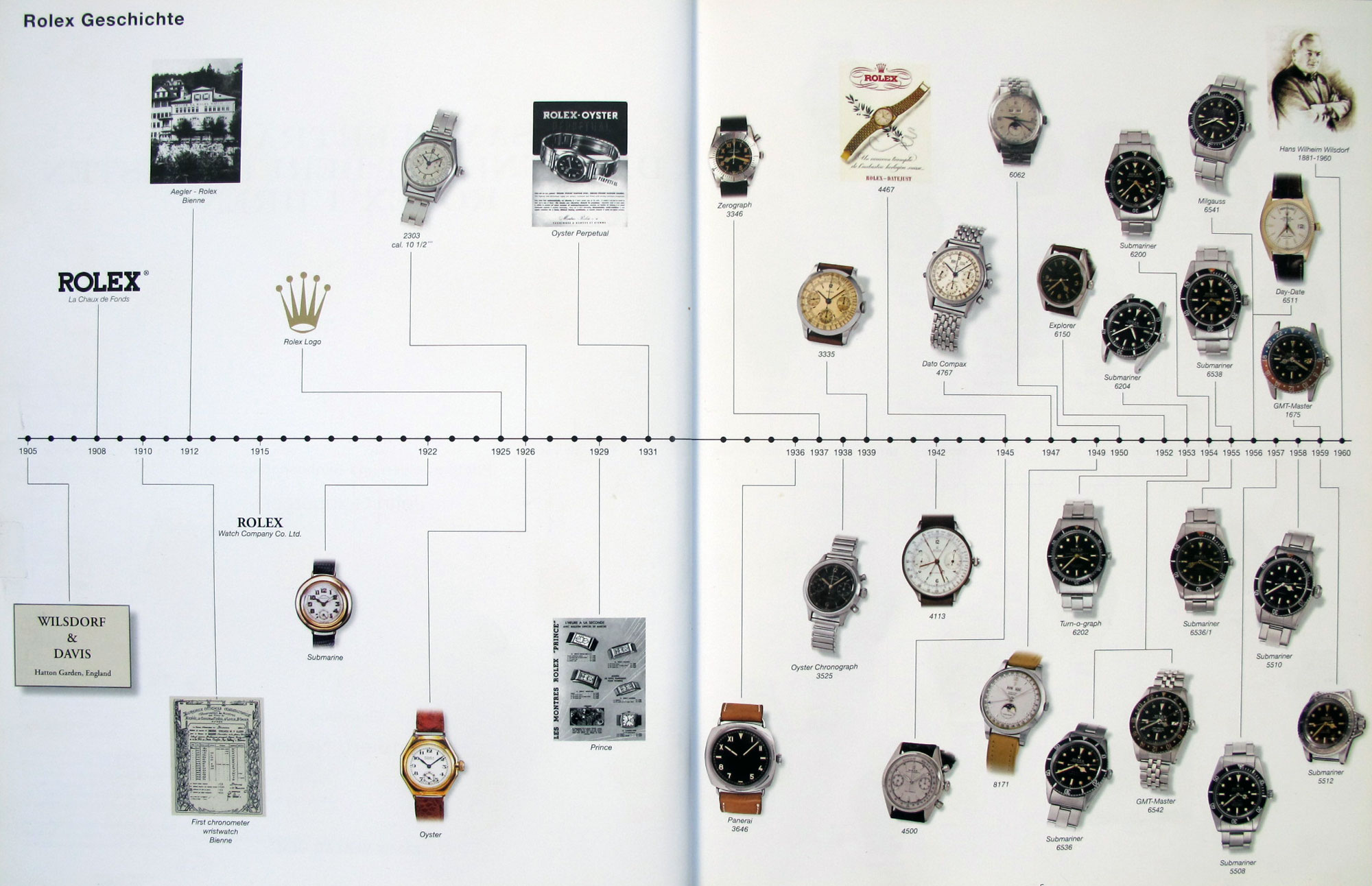
Rolex best invention, the waterproof OYSTER case…
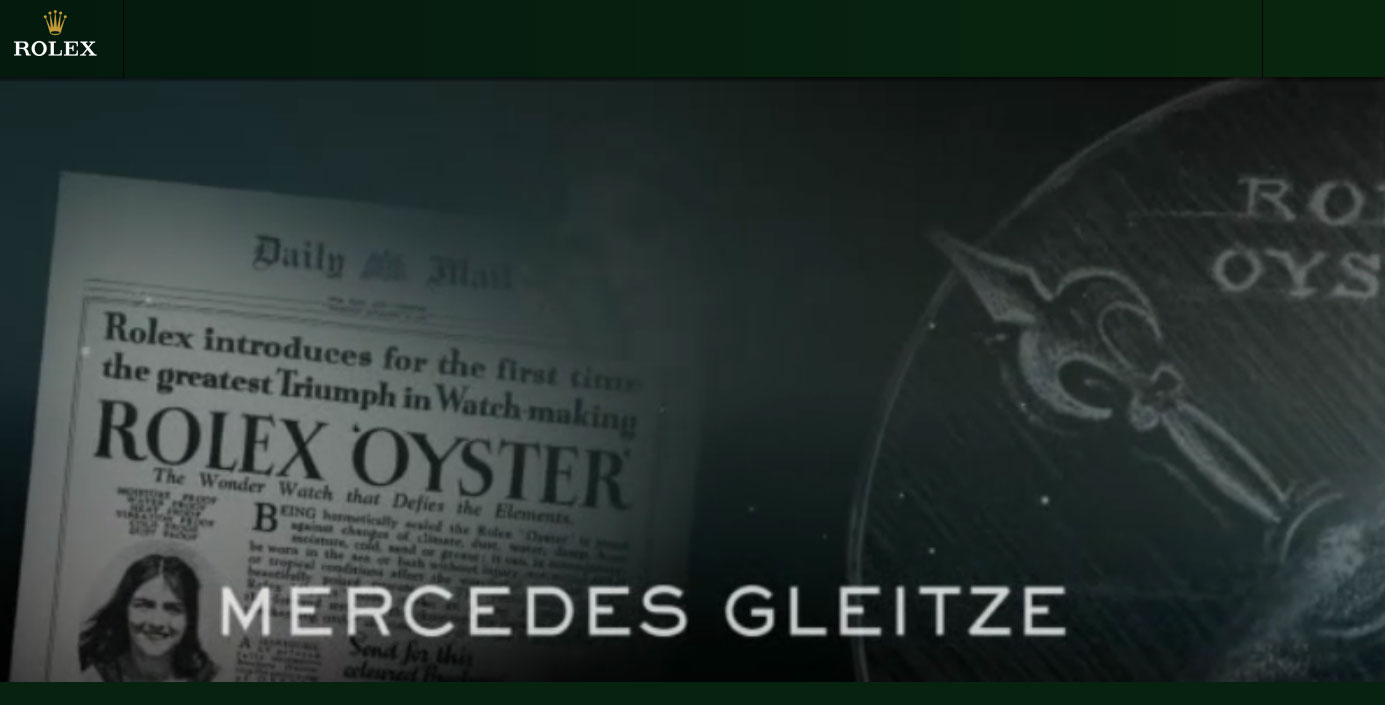
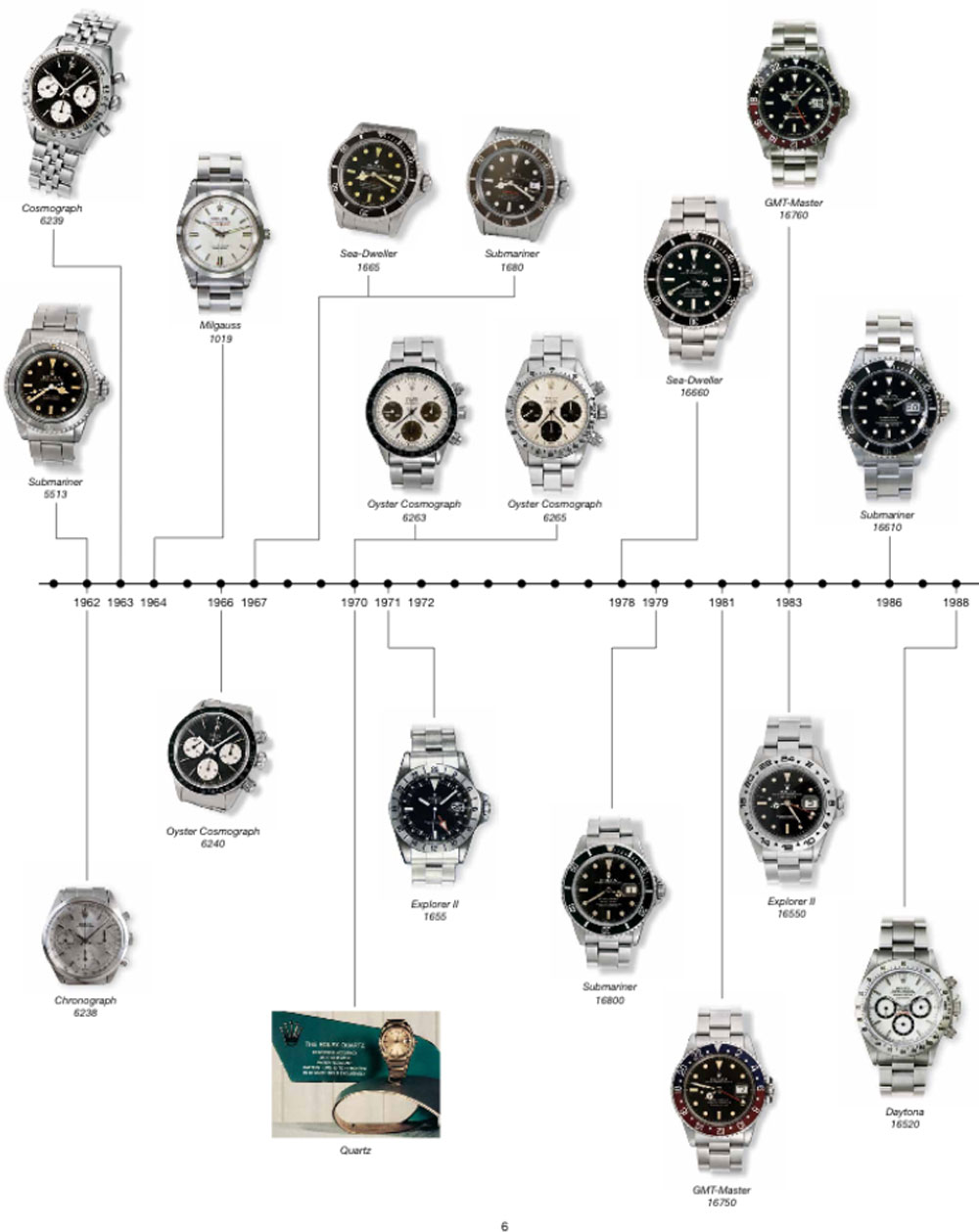

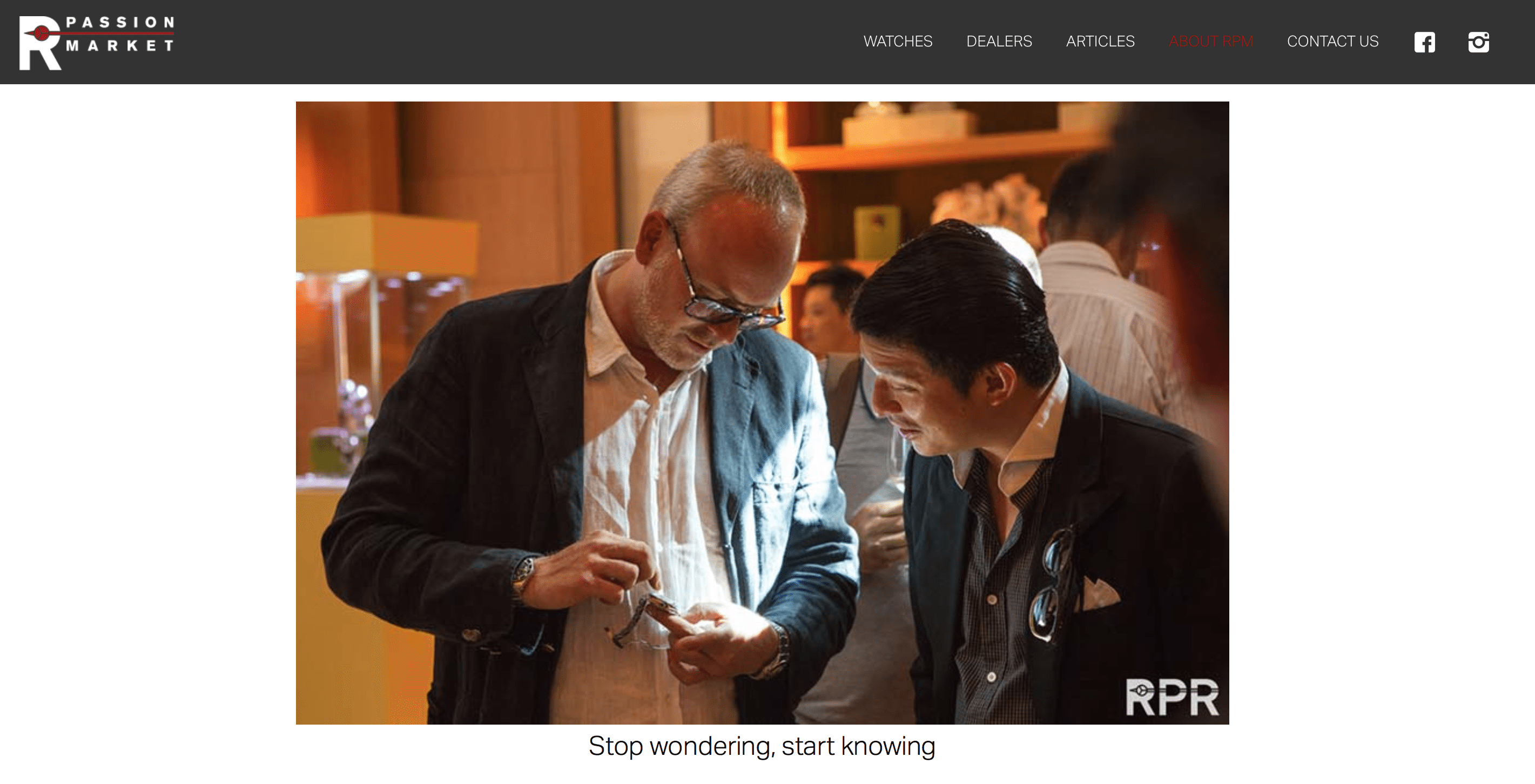
Cheers,
Philipp

